


















Modest gold watches made with superior manufacturing skill, have a centuries-old tradition in Germany. After Glashutte‘s new rise, the watchmakers and their fine watches were able to attain a world-renowned reputation once again. With the Patria, we keep Glashutte’s deep-rooted horological tradition alive: the watch must be noble, beautiful, and precise.
Patria · manufacture caliber · 6600-01

TO OBTAIN FURTHER INFORMATION IN NORTH AMERICA, PLEASE CONTACT Tutima USA, Inc. • 1-888-462-1927 • info@tutimausa.com • www.tutima.com


editor in chief ed mckinley managing editors
yesenia duran elizabeth schiele associate editor kendall polidori editor at large garrett baldwin technical editor james blakeway contributing editors
vonetta logan, tom preston, eddie rajcevic, mike rechenthin creative directors tim hussey, gail snable contributing photographer garrett roodbergen editorial director jeff joseph
comments, tips & story ideas feedback@luckboxmagazine.com contributor’s guidelines, press releases & editorial inquiries editor@luckboxmagazine.com advertising inquiries advertise@luckboxmagazine.com subscriptions & service support@luckboxmagazine.com
media & business inquiries associate publisher elizabeth schiele es@luckboxmagazine.com publisher jeff joseph jj@luckboxmagazine.com
Luckbox magazine, a tastytrade publication, is published at 19 N. Sangamon, Chicago, IL 60607 Editorial offices: 312.761.4218 ISSN: 2689-5692
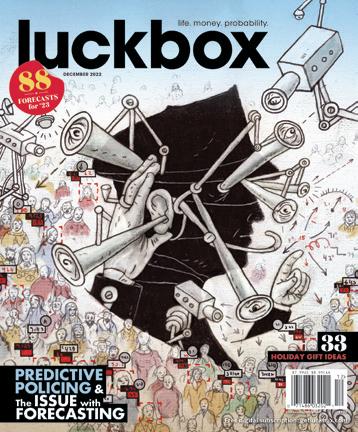
Printed at Lane Press in Vermont luckboxmagazine.com
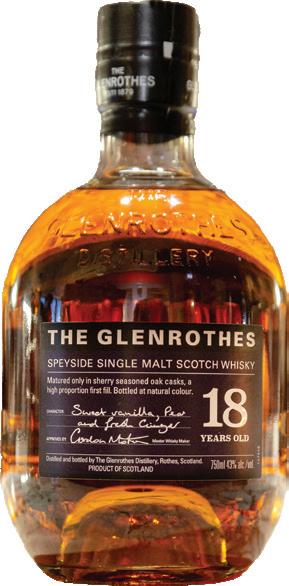


@luckboxmag
Luckbox magazine content is for informational and educational purposes only. It is not, nor is it intended to be, trading or investment advice or a recommendation that any security, futures contract, transaction or investment strategy is suitable for any person. Trading securities and futures can involve high risk and the loss of any funds invested. luckbox magazine, a brand of tastytrade, Inc., does not provide investment or financial advice or make investment recommendations through its content, financial programming or otherwise. The information provided in luckbox magazine may not be appropriate for all individuals, and is provided without respect to any individual’s financial sophistication, financial situation, investing time horizon or risk tolerance. luckbox magazine and tastytrade are not in the business of executing securities or futures transactions, nor do they direct client commodity accounts or give commodity trading advice tailored to any particular client’s situation or investment objectives. luckbox magazine and tastytrade are not licensed financial advisers, registered investment advisers, or registered broker-dealers. Options, futures and futures options are not suitable for all investors. Transaction costs (commissions and other fees) are important factors and should be considered when evaluating any securities or futures transaction or trade. For simplicity, the examples and illustrations in these articles may not include transaction costs. Nothing contained in this magazine constitutes a solicitation, recommendation, endorsement, promotion or offer by tastytrade, or any of its subsidiaries, affiliates or assigns. While luckbox magazine and tastytrade believe that the information contained in luckbox magazine is reliable and make efforts to assure its accuracy, the publisher disclaims responsibility for opinions and representation of facts contained herein. Active investing is not easy, so be careful out there!
Hope you got your things together Hope you are quite prepared to die Looks like we’re in for nasty weather One eye is taken for an eye Well don’t go around tonight Well it’s bound to take your life There’s a bad moon on the rise
The Prophet Baba Vanga, an elderly Bulgarian mystic and herbalist, has been blind since childhood. But she still sees plenty of trouble ahead.
Her warnings of carnage in 2023 include an explosion at a nuclear power plant in some undisclosed location and the use of bioweap ons by a “large country” to slaughter thou sands, according to an IndiaTV report.
Perhaps inspired by the reversal of Roe v. Wade, the seer is indicating governments will restrict natural childbirth next year to promote lab-grown reproduction.
On the cosmological level, Earth’s orbit of the sun will shift in some unspecified way in the coming months, she said. Meanwhile, she anticipates massive solar storms capable of triggering a host of terrestrial problems in 2023, like knocking out electrical service and interrupting communications.
Those predictions qualify as darkly momen tous by any measure, so this Annual Issue With Forecasting of Luckbox might seem tame by comparison. But there’s a far greater probability the predictions on these pages will come to pass.
We begin with Fake Financial News
musings on the weather forecasts in the Farmers’ Almanac and The Old Farmer’s Almanac. Don’t confuse the two. Skepticism aside, our columnist finds both annual publi cations provide some pleasant reading and useful advice.
Next comes a report on using predictive analytics to forecast when and where crime will occur. It’s no longer science fiction. Actual scientific analysis indicates it makes the streets safer.
That’s followed by a noted futurist’s thoughts on the promise and perils of artifi cial intelligence, especially as it applies to law enforcement.
After that, look for a mashup of irony, sarcasm, cynicism, humor, seriousness and perhaps even alarm in the Luckbox editors’ annual predictions for the upcoming year.
Then there’s the yearly prediction challenge that pits Luckbox readers against a panel of financial pros. Yes, the two sides sometimes agree—but not always.
In the magazine’s Trends section, The Rock hound offers four prognostications for the coming year, concerning indie artists moving to major labels, TikTok’s flirtation with the
Thinking Inside the Luckbox Luckbox is dedicated to helping active investors achieve skill-derived, outlier results.
1 Probability is the key to improving outcomes in the markets and in life.
2 Greater market volatility brings greater opportunity for astute active investors.
3 Options are the best vehicle to manage risk and exploit market volatility.
4 Don’t rely on chance. Know your options because luck smiles upon the prepared.
music business, legends selling the right to their entire catalogs and the burgeoning distri bution of vinyl.
The Rockhound’s coverage continues with an account of how an app called “The Ultimate Playlist” is combining the newest in music, gaming and lotteries and then paying music fans for listening.
But it wouldn’t be Luckbox without plenty of advice on investing. This issue’s Trades & Tactics section delivers on the forecasting theme, opening with an article on Palantir Technologies, a public company specializing in predicting the future of crime, terror and other subjects.

The Trades & Tactics section continues with sound, forward-looking counseling on the fate of the U.S. dollar, projections on what’s in store for cryptocurrency, a collec tion of tasty trading strategies and lots more actionable intel.
Yet, forecasting isn’t everything, so the magazine gets into the spirit of the season by presenting a holiday gift guide. Sure, you’ll find ideas for presents—but don’t hesitate to bestow some of these treasures upon yourself. You deserve it.
After all, we’ll all need a diversion from the calamities Baba Vanga says will soon be upon us.
We asked Luckbox readers what surprises lie ahead in 2023
The use of nuclear weapons in Ukraine and China’s takeover of Taiwan.
—Christopher McKinnon, Los Angeles
Republicans eliminate the filibuster. Joseph Chizik, Irvine, CA
Circuit breakers on down days, capitulation stage of the bear market.
—Diego Krukever, Aventura, FL
A government shutdown over debt ceiling negotiations accompanied by a steep increase in Consumer Price Index numbers will cause the S&P to drop another 15%-20% before beginning a broader recovery.
—Robert Haney, Grand Rapids, MI
Readers and our panel of financial experts share more surprises for 2023, beginning on p. 24.
What Young Voters Want—I’m 73 and found this article as scary as my grandfather found what young voters wanted when I was 23. And the beat goes on ...
—Tom Molitor, Mequon, WI
The policy discussions that Luckbox has brought to the public are very interesting and enlightening for me. Thank you Luckbox!
—Md. Juwel, Dhaka, Bangladesh
Luckbox is amazing. A joyful convergence of risk, probabilities, pop culture and options trading. I love the magazine!

—Luiz Carvalho, Stamford, CT
I appreciate that your content remains objective. Politics is not an easy topic.
—Tim Radle, Cleveland
Love all of the math and data in your stories. Wonderful work, team! Thank you!
—Drew Baja, San Diego
The article on ranked choice voting was very helpful. In general, Luckbox scratches me where I itch.
—Michael McKinney, Bristol, TN
Two ways to send comments, criticism and suggestions to Luckbox
Email tips@luckboxmagazine.com
Visit luckboxmagazine.com/survey A new survey every issue.
Your thoughts on this issue? Take the reader survey at luckboxmagazine.com/survey
There’s more to Luckbox than meets the page.

Look for this QR code icon for videos, websites, extended stories and other additional digital content. QR codes work with most cell phones and tablets with cameras. Open your camera
I understand that everyone has their opinion, but there are ways to communicate events affected by political decisions objectively. I hate when the content from sources is clearly trying to stoke a fire by using inflammatory language directed toward specific political leaders or groups. I didn’t see that with Luckbox, which I liked.
—Tim Bartleman, Polk City, IA
I always enjoy coverage of the political markets utilizing predictit.org markets and the creativity of Vonetta Logan. Whether it is DeFi [decentralized finance] or ranked voting, Luckbox has a knack for explaining complicated subjects in a simplified manner. I may not always agree with the summary, but the explanation is always fair.
—Kirk Sattazahn, Womelsdorf, PA
The Washington Post
“It’s tough to make predictions, especially about the future.”
Yogi Berra
SEE
SEE PAGE 58
The number of copies of the Old Farmer’s Almanac circulated each year
—The Old Farmer’s Almanac Media Group
SEE PAGE 10
of U.S. adults who report an increase in crime where they live marks a 5% uptick from last year.
—Gallup, Oct. 28, 2022
SEE PAGE 14
Tom Sosnoff, co-CEO of tastytrade
SEE PAGE 24
Morgan Stanley’s Mike Wilson, a known stock market skeptic, Bloomberg
SEE PAGE 62
Long-range weather predictions have helped keep the Old Farmer’s Almanac in business for centuries. The editors must be doing something right.
By Vonetta LoganAs I sit down to write in my lavishly appointed solarium, it’s 79 degrees outside and my air conditioner is running like it’s trying to qualify for a marathon … a week before Halloween.
So, how in the world can a publication that rests between Us Weekly and the National Enquirer in the grocery store checkout line accurately predict complex weather patterns 16 months in advance? I’m referring, of course, to the Farmers’ Almanac.
I have the farm cred to ask that question. At 13 years old, I took to the fields as a day laborer, detasseling corn in Indiana and Michigan.
That’s why it seemed natural for me to consult the latest issue of the Farmers’ Alma nac to see if it’s still relevant in the digital age. Besides, this issue of Luckbox is all about forecasting.
I ordered my Farmers’ Almanac from Amazon for $7.99. When it arrived, I was shocked at how flimsy it’s become. The newsprint seemed as thin as tissue paper. I thought the Alma nac was rugged, robust and, well, yellow. This book’s cover was a garish mash of pumpkin orange and spring green.
In a quandary, I took to Google and learned there are actually two different farmers’ alma nacs. There’s the Old Farmer’s Almanac and then there’s the plain Farmers’ Alma nac . Seems we have a “Fleet Farm” versus “Farm and Fleet” situation. (This joke kills in Wisconsin.)
The Old Farmer’s Almanac debuted during George Washington’s first term in 1792 (**starts singing One Last Time from Hamil ton**). The “new” Farmers’ Almanac is a spring chicken comparatively, founded in 1918.
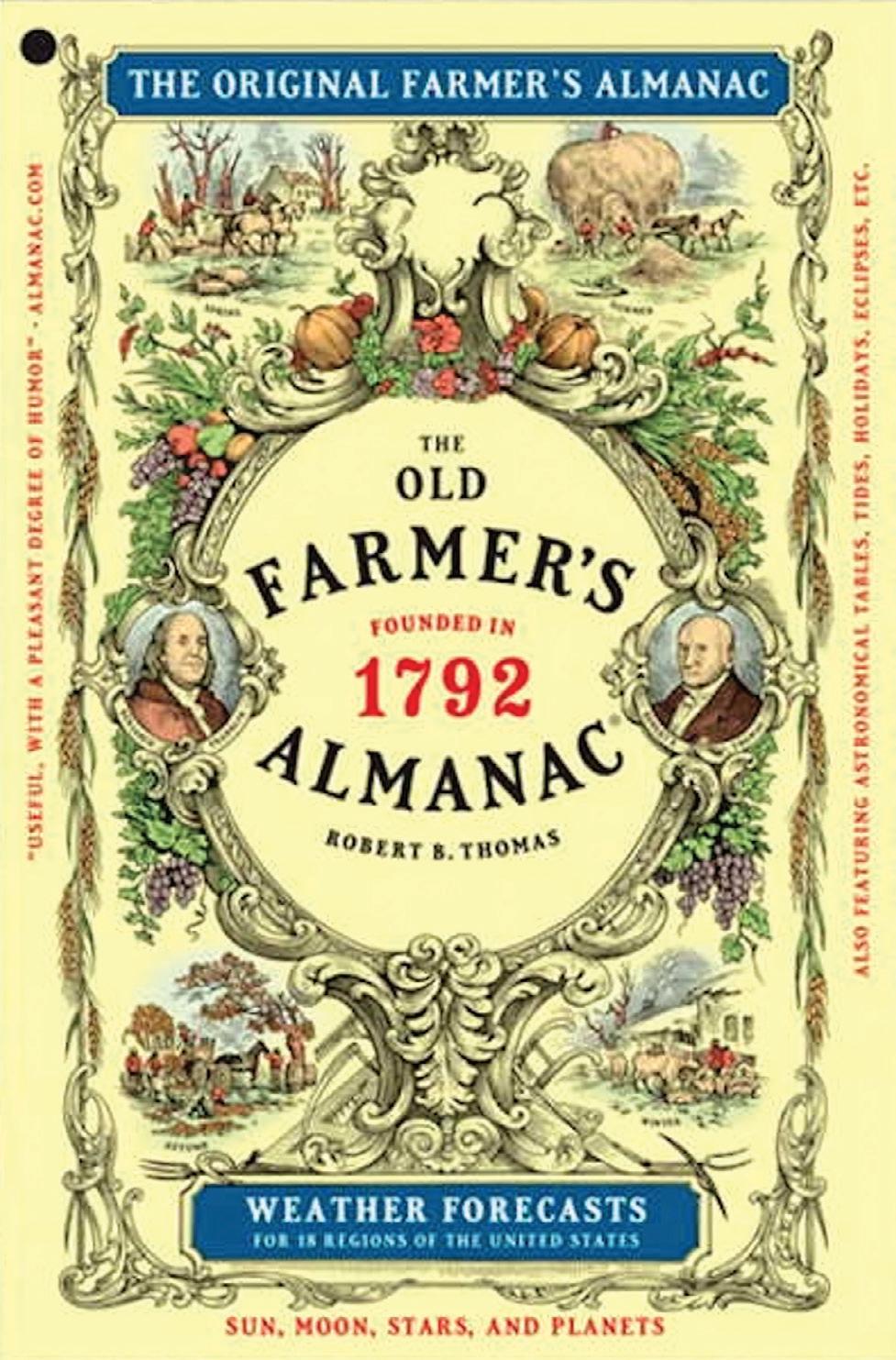
“They’re similar in that they offer yearly weather predictions—along with fun facts, stories, recipes, humor and other practical recommendations—but they differ in the way they make those predictions,” according to the Trivia Genius website.
Forecasting couch
I asked Tom Sosnoff, tastytrade’s founder and resident contrarian, how accurate he thought an almanac could be. “Best guess? Less than 50%. They’re just guessing,” he remarked as he
desecrated a bowl of Korean chicken.
Then I asked tastytrade’s resident quant, Dr. Michael Rechenthin, an actual data scien tist. “They’re probably more accurate than just 50-50,” he said, “but I’d have to take a look at their forecasting tools.”
Trivia Genius had something to say about it. The Old Farmer’s Almanac uses “a mix of solar science, prevailing weather patterns and a study of the atmosphere,” it said.
Meanwhile, the Farmers’ Almanac report edly relies on “solar science, lunar tidal action and planetary positions.”
Both claim accuracy rates of over 80% but keep the details of their forecasting methods a closely guarded secret. The former locks them up in a black box hidden in the office, and the latter uses the pseudonym Caleb Weatherbee to protect the identity of its prognosticators. As a drag queen name, it could use some work. Might I suggest Ivanna Warmfront?
According to a study at the University of Illinois, the Old Farmer’s Almanac is only 51.9% accurate with precipitation fore casts and 50.7% accurate with monthly temperature estimates. But it’s like finan cial forecasting. When you’re right, people go nuts. When you’re wrong, they just forget.
But back to the current issue. Are you ready to Shake, Shiver and Shovel? a headline asked in the current issue. Um, that’s a no from me, dog. But as I thumbed through the publication, which is about the size of Reader’s Digest, I found myself smiling.
Y’all, the almanac is funny. They got jokes. Because I’m an elderly millennial, I could easily envision every single article becom ing a life hack video on TikTok. Gen Z loves
tips your granny probably knew back in the day that the digital generation is just now discovering.
Take for example, the article entitled Plants that Double as Weather Forecasters. Type out the info from the article into your video, and sync it to the Weather Girls singing It’s Rain ing Men. Boom! Ten million views.
A story called Can I Freeze That? is a helpful guide to freezing milk, bread and eggs. Sync that to Ice, Ice, Baby. Boom! Twenty million views, and you can quit your job now, kid.
Seriously, I could envision every article as a quick TikTok. I did actually learn a lot, but let’s
nationwide, but especially over the North Central region.”
It’s predicting snow, rain and slush. So, get your hot chocolate, thermal undies and maybe a large, bearded man to keep you warm because the ‘nac is forecasting record-breaking cold temps.
Despite scrutiny by skeptics, the almanacs manage to be fun, fresh and insightful after all these years. Too bad we can’t say the same about Congress, but I digress.

I found a dope recipe for honey churro cook
get to the goods.
Weather predictions? Well, an article in last year’s almanac with the headline Frosty, FlipFlop Winter summarized the winter ahead for 2021-22. “For winter enthusiasts and snow lovers, December 2021 was one to forget,” the almanac said.
Dang y’all, they were right! Last December was one to remember for wearing flip-flops as you hung your stockings. I camped last year in the Mark Twain National Forest in Missouri a few days after Christmas. December 2021 was the warmest in the 127-year history of weather records, and the almanac nailed the call.
The Farmers’ Almanac’s winter forecast for this winter, however, isn’t as rosy: “The big takeaway from this winter will be frigid temperatures that will flow into many areas
ies, learned about climate-friendly plants and got some insight into how long I might be able to get away with riding my motorcycle before I freeze important body parts off.
Old Farmer’s Almanac publisher Robert B. Thomas probably put it best when he said “our main endeavor is to be useful, but with a pleas ant degree of humor.”
That’s been the key to success at the “new” almanac for nearly a century and at the “old” one for more than twice that long—and counting. Now, if you’ll excuse me, I need to figure out the best days for catching a large, bearded man.
THIS WINTER? Be ready to shake, shiver and shovel, the almanac warns.
The almanac claims 80% accuracy but keeps details of its forecasting methods SECRET.







Computers are predicting when and where crimes will occur—but don’t expect a real-life remake of the 2002 sci-fi film Minority Report.
In other words, Tom Cruise won’t be swooping down in a futuristic bladeless heli copter to stop an aggrieved husband from plunging a pair of scissors into the chest of his cheating wife.
Instead, police are driv ing their cruisers through certain neighborhoods more often at a particular time on a specific day or night. And it works—statistics indicate the mere pres ence of law enforcement deters bad guys from doing wrong.
“We probably disrupted criminal activ ity eight to 10 times a week,” observed Sean Malinowski, formerly a captain in the Los Angeles Police Department Foothill Divi sion. His testimonial to crime-prediction technology appears on the website of a company that supplies the software.
Such programming, often called predic tive analytics, is demonstrably correct at predicting crime 90% of the time, according to University of Chicago researchers. Other experts contend it’s only a little better than guessing—but still significant.
They agree it’s important because reduc
ing wrongdoing always pays off in this crime-ridden country.
Last year, homicide claimed the lives of 13,537 victims in the United States, accord ing to reports filed with the FBI’s Crime Data Explorer website. But the law enforce ment agencies providing the data cover only 64% of the nation’s population, so the
theft, phishing, extortion, romance scams, confidence schemes, fake investments, and failure to pay for or deliver goods. In 2020, victims filed 791,790 complaints of suspected internet crime with the nation’s 18,000 law enforcement agencies, up from about 300,000 in 2019, according to the FBI. Losses in 2020 exceeded $4.2 billion, the bureau said.
So, what’s to be done?
real total would be much higher. Numbers derived from a full accounting would most likely surpass the 16,899 members of the American military who died in Vietnam in 1968. That was the conflict’s bloodiest year, according to the National Archives.
Plus, those stats don’t take into account the toll of lesser but still heinous violent crimes like manslaughter, forcible rape, robbery and aggravated assault. Then there are property crimes like auto theft, burglary and vandal ism. And don’t forget the white-collar crimes of fraud, embezzlement, money laundering, securities and commodities scams, and theft of intellectual property rights.
Meanwhile, more crime has moved online during the pandemic in the form of identity
Geolitica, a 10-year-old Santa Cruz, California-based predictive policing company formerly called PredPol, is working with police departments and security companies to head off property crimes.
Nearly 50 police forces and sheriff’s departments are using the company’s service to help protect about 10 million citi zens, said Geolitica CEO Brian MacDonald.
He declined to discuss how much his company charges but acknowledged that an initial cost of $60,000 posted on his website has increased of late.
Whatever the price, Geolitica gathers and crunches huge amounts of data to predict when and where crimes are most likely to occur.
“We start with two really basic concepts,” MacDonald said. “The first one is known



AROUND 2% TO 5% OF A CITY GENERATES MORE THAN HALF OF ANY DESIGNATED TYPE OF STREET CRIME.
informally as the law of crime concentra tion, which states that crimes do tend to cluster. Somewhere around 2% to 5% of a city generally generates more than half of any designated type of street crime.”
The law of clustering has been documented scientifically in the work of David Weisburd, a noted criminologist at George Mason Univer sity and Hebrew University in Israel.

Geographic hot spots include anything from obviously troubled neighborhoods plagued by socioeconomic woes to rela tively clean and seemingly secure Walmarts where criminals break into shoppers’ cars, MacDonald noted.
“The second principle is that you can actually deter crimes by putting someone in those places before the crimes occur,” he continued. “Rolling a black and white
The two-step approach of identifying high-crime areas and then policing them prevents street crime but doesn’t deal with vice, like prostitution or drug peddling, and doesn’t prevent crimes, such as forgery, domestic violence or cybercrime, MacDon ald noted.
What’s more, the data underlying the company’s work springs from police reports filed by citizens who are clearly victims. People almost always call the authorities to report a stolen car but seldom turn them selves in for smoking crystal meth.
Geolitica extracts three elements from police reports: the type of crime, the place where it occurred, and what day and time it went down, MacDonald said. Stated concisely, they’re focusing on “what,” “where” and “when” and leaving specific informa tion about victims, perpetrators and neighborhoods untouched.
Crime clusters occur around the same time and in the same locations, he said, explaining robberies tend to occur down town on weekdays around noon or in entertainment districts at night and on weekends.
In one example of typical criminal behavior, burglars who hit commercial enterprises instead of residences often move around a city, MacDon ald noted. Veteran police offi cers know those patterns from
much more data than people can compile and interpret on their own, he maintained.
But how does it work?
When a law enforcement agency signs on with Geolitica, it provides two to five years of data. The company uses the stats to build a model that’s updated every day. If a depart ment has three, eight-hour shifts on 10 beats, it receives 30 sets of predictions daily.
The predictions look like a Google map with two or three boxes, each encompassing a chunk of the city measuring 500 feet by 500 feet. The probability of specified crimes is greatest inside those boxes.
Between radio calls from the dispatch ers, officers are expected to spend more time patrolling those areas and engaging with citizens there.
At the start of a shift, sergeants and patrol officers click on the boxes to see what crimes have high probabilities, said Deputy Police Chief Rick Armendariz of the Anaheim, California, police department. He imple mented the Geolitica system while serv ing in the police department in Modesto, California.
During a six-month period, the Modesto department tracked auto theft, residen tial burglaries and commercial burglaries and managed to reduce each category by 40% to 60%, Armendariz said in an Inter national Association of Chiefs of Police convention presentation. But the benefits didn’t end there.
through a parking lot with a lot of auto thefts on a random, irregular basis through out a shift has proven to have a strong deter rent effect on crime.”
Christopher Koper, also a George Mason professor, conducted research in Milwau kee supporting this premise. If officers spend 10 to 15 minutes in an area, they have a chilling effect on crime for about two hours, Koper found. It’s what MacDonald calls “the center of the bell curve in terms of presence and deterrence.”
experience and proactively work those areas at those times, even without the help of predictive analytics.
But relying on hunches opens the door to bias and thus makes officers less effective, he said. Plus, putting pins in a wall-mounted squad room map to locate high-crime areas is backward-looking and doesn’t point to days of the week or times of day.
Automating the process, as Geolitica does with predictive analytics, enables police departments or sheriff’s offices to draw upon
“It made our department mission-spe cific,” he observed. Instead of allow ing Modesto officers to create their own “missions” as self-appointed specialists pursuing crimes of their own choosing, like drug arrests or traffic stops, it improved the department’s efficiency by keeping the entire force “on the same page” and sending members out to follow the same priorities, he continued.
High-tech preventive policing seemed natural to Modesto’s younger officers but required a cultural shift for veterans of the force who were accustomed to relying
on their personal knowledge of the city, Armendariz noted.
But even when officers want to follow the system’s mandate to spend time in certain areas, they’re often taken elsewhere in response to calls, noted Philip Lukens, chief of police in Alliance, Nebraska. Some times, they simply forget to follow up on the predictions, he said.
“If it’s up to the officer to look at the map and then go patrol that area, it just doesn’t happen,” Lukens maintained.
If an officer needs to work traffic from 3 p.m. to 3:15 p.m. at a certain intersec tion on a particular date, there’s an 80% chance of missing the appointed task, he
said, adding that sergeants are simply too overburdened to make sure officers are complying.
That’s why Alliance is working with Geolitica to set up automatic “ghost calls” to dispatch an officer to the area at the right time. Instead of relying on officers to patrol a designated location, the system occasion ally dispatches them to that spot. If the officer who would be receiving the call is otherwise engaged, the ghost call rolls to another officer.
“We need to pull and push data at the same time because that’s how we become effective at intercepting the issue,” Lukens said, “and then we’re analyzing it to see if we’re effective.”
His department also uses the preventive policing data to locate hot spots and then park an unstaffed, marked police car in the area as a deterrent to crime during a 6-hour to 8-hour window. The practice of using
squad car decoys has reduced property crime in Alliance by 18% this year, he said.

But police may someday act upon preven tive analytics without having to commit an officer or even an empty squad car. They could dispatch robots to do it.
Knightscope, a Mountain View, Califor nia-based public company, began oper ations in 2013 and deployed its first crime-preventing robots two years later, according to CEO William Santana Li.
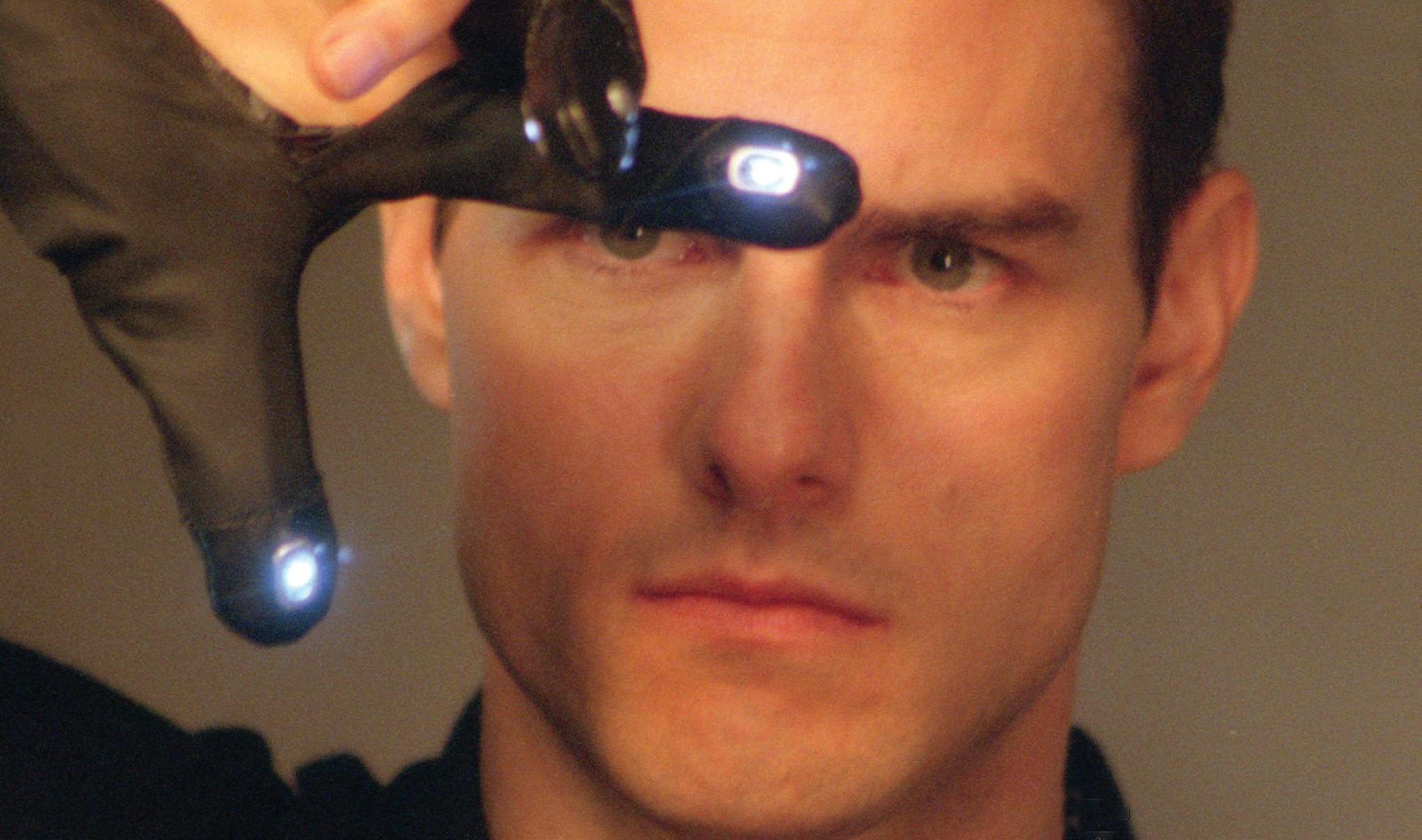

“Our mission is to make the U.S. the safest country in the world,” Li said. “What if a robot could save your life?”
The company’s robots operate on predictive polic ing data from other companies to make their rounds. They
come in both indoor and outdoor models, and the most popular, known as the K5, stands 5 feet tall, measures 3 feet wide, weighs in at 400 pounds and roams around autonomously.

The robots combine four difficult-to-ex ecute technologies: robotics, electric vehi cles, artificial intelligence and autonomous self-driving capability, Li said.
Knightscope doesn’t sell the robots but instead rents them out for 75 cents to $9 an hour, depending upon the application. The company provides the hardware, software, docking stations, telecom connections, data storage, support and maintenance.
About 100 of the roving robots are on the
job, joining the company’s thousands of stationary devices that are capable of such tasks as facial recognition and capturing license plate numbers.
Some police departments are using the mobile robots to patrol areas where predictive analytics forecasts crime is most likely to happen, Li said, offering anecdotes about the machines assisting in the arrest of a sexual predator and an armed robber.
A unit nicknamed “HP RoboCop” has made the rounds at a city park in Huntington Park, California, urging in a pleasant voice that people “please help keep the park clean.” The city is spending less than $70,000 a year to rent the device, Cosme Lozano, the town’s chief of police, told a local NBC News outlet before the pandemic.
Vandals once tipped over HP Robo Cop, but the machine recorded images of its attackers on videotape, and the police took the alleged miscreants into custody within hours of the incident, Lozano said.
Effective police work aside, most Knightscope units are finding homes in casinos, hospitals, warehouses, schools and apartment complexes—relieving guards of the monotonous duty of monitoring large spaces.
Li estimates 90% of the robots are working in the private sector and 10% for government agencies, including police departments. But he envisions having a million of them on the job in the next two decades, aiding law enforce ment officers and security guards.
Whether robots proliferate or not, using predictive analytics to deter wrongdoing doesn’t end with head ing off street crime. Banks can use it to detect and prevent money laundering, and insurance companies can use it to set rates keyed to the likelihood certain customers will commit fraud or take up dangerous lifestyles.
Businesses are using computing power to enhance their ability to deal with malfeasance, according to Runhuan Feng, a University of Illinois math ematics professor. He directs the school’s new master’s degree program in predictive analytics and risk manage ment for insurance and finance.
For many years, bankers and insur ers have relied on imprecise rulesbased pattern recognition in their attempts to curb impropriety. They might, for example, flag an account when a depositor transfers more than $10,000, Feng said.
But unaided humans can’t apply enough rules to achieve much accu racy. Now, however, computers are amassing and evaluating enough data to create models that generate much more valid predictions.

Such predictions are benefitting an insurer that sought Feng’s advice. He not only helps the insurance company manage its own data but also adds data from other sources. That results in better models that identify risk ier customers who should pay higher rates. It alleviates the need for lowerrisk customers to subsidize those more likely to indulge in fraud.
Fraud constitutes a real problem for insurers because criminals file false claims with several companies, he noted.
Yet, fraud isn’t the only reason insur ance claims can increase in number or severity. In one example, bring ing in information from third-party sources might reveal that a customer engages in extreme sports, Feng said. That means the insurer should charge a higher premium for life or health coverage, he noted.
Before the insurance company approached Feng, it was predicting fraud and other problems with 50% to 60% accuracy, not much better than
Crunching numbers to predict the future isn’t limited to forecasting crime. It can tell us, for example, that vegetarians miss their flights less often than meat eaters. (True, by the way.)
Who would care about that? Well, that type of granular information helps airlines set ticket prices and adjust schedules, thanks to something called “predictive analytics.”
It’s a phrase that might seem vague, so Luckbox turned to an expert to pin down the definition. He’s Eric Siegel, a former professor at Columbia University and author of Predictive Analytics: The Power to Predict Who Will Click, Buy, Lie, or Die.
“Predictive analytics is essentially a synonym for machine learning,” Siegel said. “It’s a major subset of machine learning applications in business.”
Machine learning occurs when computers compile data, and data is defined as a recording of things that have happened, he continued. It renders predictive scores for each individual—indicating how likely customers are to miss a flight, cancel a subscription, commit fraud or turn out to be a poor credit risk.
“These are all outcomes or behavior that would be valuable for an organization to predict,” Siegel noted. “It’s actionable because it’s about putting probabilities or odds of things.”

Plus, predictive analytics isn’t just about humans. It can forecast the likelihood of a satellite running out of battery power or a truck breaking down on the highway.
Just about every large company uses it, and most medium-sized ones do, too. Cell phone providers predict which customers will switch to another network, and FICO screens two-thirds of the world’s credit card transactions to understand who might commit fraud.
“Prediction is the holy grail for improving all the large operations we do,” Siegel maintained. “It doesn’t necessarily let you do it in an ‘accurate’ way in the conventional sense of the word, but it does it better than guessing.”
40% to 60% REDUCTION IN AUTO THEFT, RESIDENTIAL BURGLARIES AND COMMERCIAL BURGLARIES IN MODESTO, CALIFORNIA, DUE TO PREDICTIVE POLICING–PHILIP LUKENS, THE CITY’S FORMER DEPUTY POLICE CHIEF In the movie Minority Report, a precog registers alarm when she “sees” a crime is about to happen. PHOTO: AMBLIN
flipping a coin. The new models get it right more than 90% of the time, Feng said.
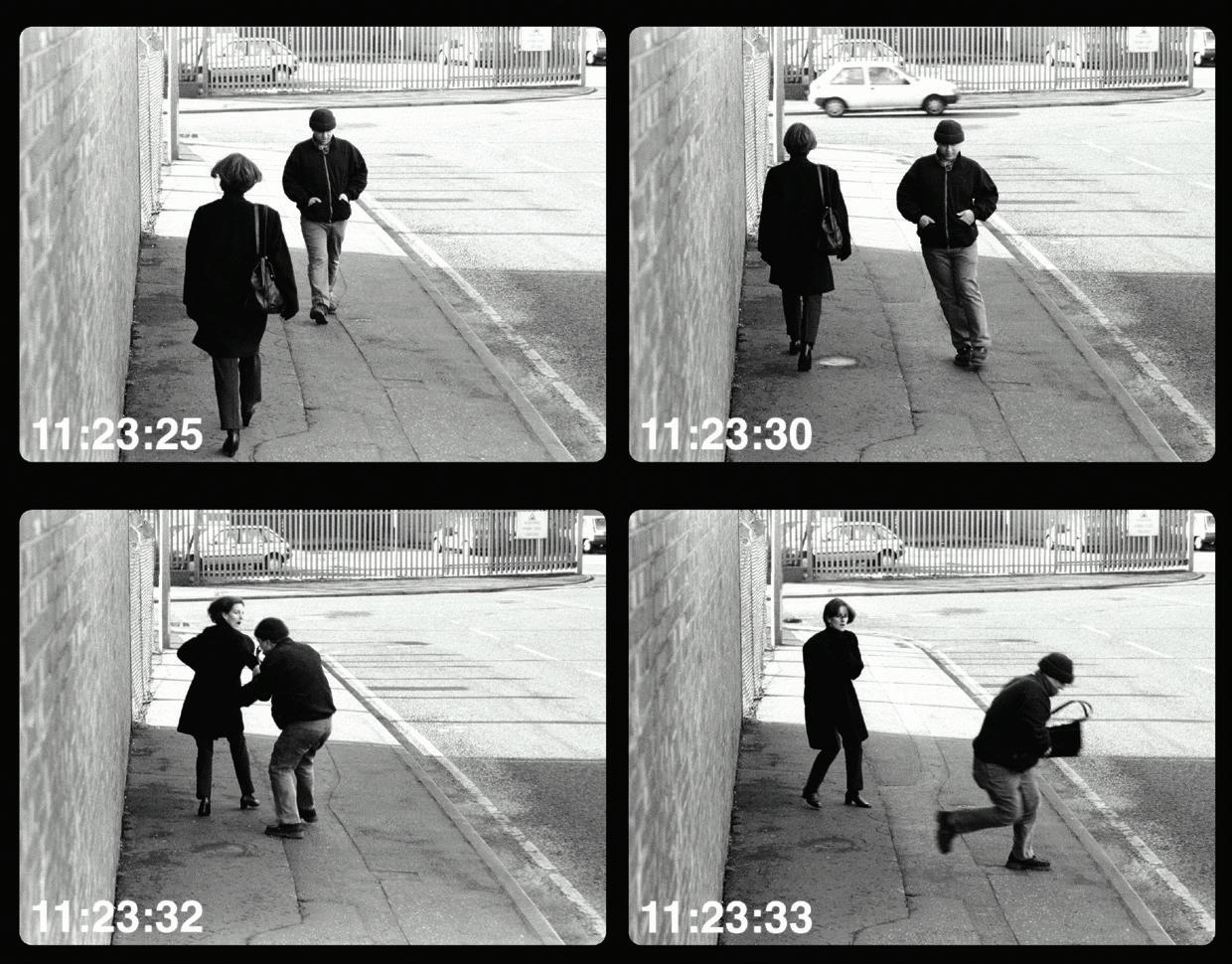
Meanwhile, better models can also alert banks to money laundering.
“What usually happens is these individu als get money from illegal activities,” Feng noted, “and they open lots of accounts and deposit small amounts. Then they use them to buy luxury products and sell them quickly.”
The machine learning model captures and combines the extensive and far-flung information needed to establish that sort of pattern and link it to an individual and compare it to known money laundering, he observed.
Few would argue against halting money laundering activities or preventing fraud, but some still aren’t comfortable with using predictive analytics to foil criminal activ ity. Critics view it as an authoritarian “Big Brother” approach to invasive surveillance.
Multiple sources note that discrimination can come into play with predictive analytics.
But proponents have responses to those concerns.
Racial bias can creep into predictive policing. Including drug arrests in the data set, for example, introduces bias against African Americans because they’re more likely than members of other ethnic or racial groups to be charged with possession or selling, according to many skeptics.
“It has nothing to do with whether there are more drugs in those neighborhoods,” MacDonald said, “it just happened to be where those officers made more arrests for that particular crime.”
That’s why Geolitica doesn’t include arrests in its data gathering, instead rely ing solely on complaints phoned in to police dispatchers, MacDonald said. Besides, police often arrest suspects far from where the crime occurred and almost always after the fact, not during the commission of the crime.
But fear of bias has prompted some municipalities to ban predictive policing. Santa Cruz, California, home of Geolit ica, began testing the technology in 2011, suspended its use in 2017 and banned it by city ordinance in 2020, according to the Los Angeles Times.

The technology became particularly inva
sive in Chicago, where authorities went so far as to notify individuals that they were likely to become involved in a shooting. The authorities just didn’t know from the predictive analytics which side of the gun the citizen would be on. By some accounts, the list included more than half of the African American residents of the city, said multiple sources.
“If you have this kind of predictive analytics, then does that give the state too much power?” asked Ishanu Chatto padhyay, a University of Chicago profes sor who’s spent the better part of a decade researching the subject. “Are the cops going to round people up? Put them in jail? Are we going to be in a Minority Report world?”
Chattopadhyay’s research team came under fire from skeptics this summer when it published the results of its predictive polic
Using data to fight crime has a parallel in the business world. In marketing, small numbers can add up to create huge gains in return on investment.
Take the example of a company that produces a product that interests 1% of the general population. If predictive analytics can identify a segment in which 3% are open to the product, the company can concentrate its marketing on the group three times more likely to buy.
That can boost sales while reducing the ad budget.
ing research in Chicago and other cities. He reported receiving “hate mail written in very polished language.”
The letter writers had not read the team’s report, he speculated, or else they would have realized that the research centered on aggre gated statistics instead track ing individuals.
Still, Chattopadhyay takes exception to identifying crime hotspots. They become a self-fulfilling prophecy because if you’re looking for crime more often in an area, you’re likely to find it, he said.
Crime fighters aren’t the only ones turning to algorithms.
Feed the right kind of information into a computer and it spits out a strategy for trading stocks and options called a black box model.
Two states of mind justify the ominoussounding name. Sometimes, investors or advisors use the term because they don’t understand the mysterious logic behind the model.
On other occasions, they see how the machine derived the strategy but consider it proprietary knowledge they don’t want to share.
BlackBoxStocks (BLBX), a platform based on the idea, is traded on Nasdaq.
At any rate, he explained the results of his research by saying that if 10 crimes are going to happen in the future, his team flagged 11 crimes and was correct eight times, had mixed results three times and false positives twice. Those results were presented in media reports as being 90% accurate.
The predictions, which produced a flurry of news coverage a few months ago, were made seven days in advance, plus or minus one day, and they were restricted to a couple of city blocks.
So complaints aside, the tools for predictive policing have become a reality that’s unlikely to disappear, according to Chattopadhyay.
“Some people are upset about AI in general and see it taking over their lives,” he said, “but artificial intelligence is here to stay. The real question is, are we going to go for the worst possible outcome or make the best of it?”









Will new technology address rising crime rates?
Across a range of contexts, it’s becoming clear that police and law enforcement must have access to new tools. But unless there is trust within the communities where they operate, the tools—especially the shiny new tech—become a hindrance, obstacle and point of contention. For example, facial recognition applications can reduce the hours needed to review video footage, but such programs can reflect biases that make policing more of a challenge.
What role do you think AI will play in reducing crime?

The promises and perils of AI are extraordi nary, especially for police and law enforce ment. Deep fakes have already been at the center of court cases, and it’s becoming clear that the only way to fight fire is with fire. So, many police and law enforcement are looking to utilize AI-enabled apps, even though the technology is still maturing. The Dubai Police [in the United Arab Emirates] have a center focused on AI applications, and predictive policing is growing in popularity.
One thing that police and law enforce ment learned during COVID-19 is that crime doesn’t disappear but adapts. Online scams and ransomware attacks skyrocketed during the pandemic, and AI—when appropriately developed—can be a powerful tool not only to catch criminals but to dissuade them.
Considering data privacy issues and the spread of video surveillance, what do you predict our Minority Report future may look like?


There are clear signals that a possible future—one similar to the 2002 sci-fi film Minority Report—may be emerging across some contexts. Specifically, the coming together of enhanced facial recognition with an increase in wearable devices, as well as other data-capturing objects and garments,
tainty, I’ve been struck by the impact of “unknown knowns.” These are the things that we think we know then it turns out that we don’t. So, it’s possible, if not likely, that anything that I might imagine now would be far less weird, and impactful, than what might actually come to pass next year.
is leading to a boom in data. Some see that as a mechanism of societal control, and perhaps that’s possible. But there are always exploits, as Minority Report depicts in a rather gory way when the protagonist is forced to change his eye. New policing and law enforcement tactics always spur new evasion strategies, and this dynamic should remind us that truth is often far stranger than fiction.
The year 2022 has offered many surprises. What black-swan events do you anticipate from now through the end of 2023?

“Expect the unexpected” should continue to ring true in 2023. While it is essential to challenge our assumptions about what is truly possible in a time of radical uncer

With that said, there’s a perfect storm brewing: economic uncertainty fueling inten tional and unintentional shifts in consump tion and lifestyle, climate emergency-driven action and reaction, and a widespread desire to move beyond the pandemic, even though it continues to be felt around the world. [These factors] all point toward more people on the move. When this happens, and communities are not prepared for change, things can become post-normal, which means that the familiar will feel strange and the strange feels, perhaps a bit too familiar.
JOHN A. SWEENEY is co-holder of the UNESCO Chair for Futures Studies for Anticipatory Governance and Sustainable Policy at West minster International University in Tashkent, Uzbekistan. Sweeney also serves as the trans formative foresight lead at the School of Interna tional Futures, co-edits World Futures Review: A Journal of Strategic Foresight and is a member of the graduate faculty for the University of Hous ton’s Strategic Foresight program. He belongs to the Association of Professional Futurists and the World Futures Studies Federation.
THE PROMISES AND PERILS OF AI ARE EXTRAORDINARY, ESPECIALLY FOR POLICE AND LAW ENFORCEMENT.
AFTER LEARNING TO LIVE WITH THE TOTALLY UNEXPECTED IN 2022, LUCKBOX MAKES ITS ANNUAL OUTLIER FORECASTS FOR ANOTHER WILD RIDE

 BY GARRETT BALDWIN & JEFF JOSEPH
BY GARRETT BALDWIN & JEFF JOSEPH
Janet Yellen steps down as trea sury secretary as inflation remains stubbornly elevated. Concerns arise that the Federal Reserve may need to tolerate 4% to 5% inflation in the coming years. The U.S. runs a massive deficit again. Inflation sits north of 4%. The dollar remains one of the top-performing assets.
Tensions between the super powers escalate because of the Biden administration’s decision to restrict China from importing advanced U.S. semiconductors. China moves on Taiwan.

Russia and Ukraine strike a peace deal. Russia annexes Crimea, and Kyiv declares neutrality while renouncing ambitions to join NATO.
The Fed hikes interest rates to 5.5% to crush aggregate demand, resulting in another leg down in the market. The markets find a bottom in 2023—likely in the first half of the year.
As the financial markets form a bottom,
community banks trading for well under their liquidation value become a favored position of retail investors looking to capitalize on deal flow.
After being hammered by the Fed’s rate hikes in 2022, Palantir Technologies (PLTR) turns around to become one of the top-performing stocks of 2023, thanks to increases in defense and cybersecurity spending.
Crude oil’s bottom: $75 in a demand-driven crush. Oil’s top: $155 thanks to supply shortages.
The investment trend of the 2020s emerges: energy, weap onry, lithium, uranium and land. Billionaires continue to gobble up commodity resources in farm ing, water and even rare earth metals.
Aaron Judge shatters the record for a Major League Baseball contract, inking an eight-year deal averaging more than $40 million per year … with the San Fran cisco Giants. He never hits more than 50 home runs in one season again.

The road to the Super Bowl runs through Buffalo and Phil adelphia, but neither team makes it there. The Kansas City Chiefs win LVII , but most people spend the next day talking about the “Rihanna halftime show controversy.”
Despite losing to Tennessee in 2022, the Alabama Crim son Tide wins the SEC West, defeats Geor gia to win the SEC championship and bests Ohio State to win the national title. Doesn’t this feel inevitable?
In horse racing, Ameri cans meet Cave Rock, a Bob Baffert horse that’s the son of the great Arrogate. If permitted to race, Cave Rock wins two of the three legs of the Triple Crown
The New York Rangers frus trate fans with a loss in the East ern Conference Finals for the second consecutive year. The Calgary Flames lift the Stanley Cup in a convincing series win over the Carolina Hurricanes. Colorado Avalanches’ center Nathan MacKinnon wins the Conn Smythe trophy.

Following months of diesel and heating oil supply short ages, Congress introduces a
bill to create strategic reserves of finished petroleum goods. It’s a move that resembles the way Europe manages its emergency fuel supplies. The bill passes the House but stalls in the Senate, thanks to lobbyist intervention.
The cost of complying with Secu rities and Exchange Commission restrictions on emissions causes another bust on Wall Street for initial public offerings. The tech nology IPO market is worse than during the Great Recession of 2007-2008.

At the end of 2023, prediction market traders at PredictIt.org rank Ron DeSan tis as the top contender for the 2024 Republican presidential nomination and Kamala Harris as the lead candidate for the Democratic presidential nomination.
Companies deploy artifi cial intelligence to track work-from-home employee productivity. Mistrust increases dramatically as companies attempt to bring workers back to the office.
The metaverse finds its mojo around gaming, porn, live entertainment and travel. Mark Zuckerberg steps aside and Meta (META) names a new CEO.
Institutional investors petition the SEC and other financial agencies to alter the rules for initial public offerings.
They complain that the Snap (SNAP) IPO in 2016 gave virtually all of the stock holder voting power to the co-founders. It happened because the terms of the IPO made it impossible for any institution to own enough shares to provide guidance or press for changes at the public company. Yet investors were forced to hold the stock through Index funds. Snap’s stock moved down 90%, and the petitioners don’t want to be caught up in that type of drop again.

Roughly 10% of reading glasses connect with the internet, creating a new device susceptible to hacking.
The Kanye-Parler deal fails to go through.

Bitcoin finds its low at $16,000 in 2023 but finishes the year at $24,000. Ethereum outper forms its rival, pushing back to the $2,500 level or higher, based on the Fed’s policies.
Twitter creates multiple tiers of screens similar to Google Search to filter out bots, racism and extreme speech—the same way Google filters out pornog raphy. But Elon Musk’s true intentions become apparent as Twitter becomes a crypto-em bracing payment platform. Revenues exceed $7 billion by 2024.


LUCKBOX ASKED A PANEL OF EXPERTS TO WEIGH IN ON THE SAME QUESTIONS THE MAGAZINE POSED IN A POLL TO READERS. HERE’S HOW THE RESPONSES FROM THE TWO GROUPS COMPARE.
CHRIS BEAUCHAMP: Chief market analyst at IG Group. @chrisb_ig

DYLAN RATIGAN: Former global managing editor for corporate finance at Bloomberg News and current cohost of the Truth or Skepticism podcast with Tom Sosnoff. @dylanratigan

TOM SOSNOFF: Co-CEO of tastytrade who appears daily on the tastytrade financial network. @tastytrade

ED YARDENI: President and chief investment strategist of Yardeni Research Inc. @yardeni

Will the March 2023 Consumer Price Index (trailing 12 months, to be released in April) indicate higher or lower inflation than the 8.2% reported in September?
Market experts unanimously agree inflation will be lower than 8.1%.
The majority of Luckbox readers also say it will be lower than 8.1%.
Will the all-grades average gasoline price be higher or lower on March 31, 2023, than the current $3.91 per gal lon reported by the U.S. Energy Information Association?
Market experts unanimously agree gas will cost less than $3.90/gallon
Luckbox readers disagree and the majority say gas will cost more than $3.91/gallon.
What will the percentage returns on the S&P 500 Index be from its closing price on Nov. 15, 2022, through closing on March 31, 2023?
Market experts could not agree.
Luckbox readers were also split on this one.
(8.1% or lower) Higher (8.2% and above)
Luckbox Readers
Luckbox Readers
Lower ($3.90 or lower) Higher ($3.91 and above)
A loss of more than 15%
A loss of 10-15%
A loss of 5-10%
A loss of 0-5%
A gain of 0-5%
A gain of 5-10%
A gain of 10-15%

A gain of more than 15%
Luckbox Readers
What will the percentage returns on gold be from its closing price on Nov. 15, 2022, through closing on March 31, 2023?
EXPERTS AND READERS DISAGREE
A loss of more than 15%
A loss of 10-15%
A loss of 5-10%
A loss of 0-5%
A gain of 0-5%
A gain of 5-10%
A gain of 10-15%
A gain of more than 15%
On Oct. 15, President Joe Biden’s ap proval rating sat at 42.2%, according to FiveThirtyEight. What will his rating be as of March 31, 2023?
EXPERTS AND READERS DISAGREE


AFTER A SERIES OF JARRING SURPRISES THIS YEAR, WHAT BLACK-SWAN EVENTS LIE AHEAD THROUGH THE END OF MARCH?
Chris Beauchamp: Ending the Russian invasion of Ukraine by removing Vladimir Putin from power would be a major surprise. A move by Apple or another big tech firm to take over Netflix would send a shock reverberating through the markets.
Dylan Ratigan: Crypto will rally by more than 50%. A cease-fire will be declared in Ukraine.
Tom Sosnoff: The biggest surprise will be the collapse of the U.S. Dollar in 2023. The second biggest will be Donald Trump’s fall from grace. He’ll cease to be a political factor.
Ed Yardeni: The stock market will rise to a new high at the end of the next year.
Recovery of the stock market.

—Luiz Carvalho, Stamford, CT Nuclear war.
—Vickie Lynn Smith, Clarkrange, TN
High inflation for a while, higher gas prices, lower stock market prices, lower home prices and, hopefully, not WW III unless Putin drops a nuclear bomb.
—Mimi Sexto, Dunedin, FL
The [war in] Ukraine will spread across Europe. —Terri Marroquin, Midland, TX
My crystal ball is in the repair shop because of supply chain issues.
—Mike Mueller, Milwaukee



This tabletop fire pit will “elevate your space’s aesthetic,” the maker says. Plus, it’s particularly suitable for urban dwellers with limited outdoor space. The 6.8-inch-high fire pit is easy to ignite and has dual-fuel capability and 360-degree airflow to provide a smokeless fire outdoors. $85, Solo Stove

g
a m e s
Ticket to Ride ranks among the three most well-known modern board games, rivaled only by Settlers of Catan and Cards Against Humanity The objective is to build train routes. The more complex the route, the higher your score. But complicated routes are also riskier. The first 600 copies of the game (Ticket to Ride Europe) were introduced in German in 2004. The game received the prestigious Spiel des Jahres (German for Game of the Year) award that same year. To date, more than 3 million editions of Ticket to Ride have been sold, and it’s available in 20 languages with over 15 expansions. Of the expansion sets, the USA 1910 Expansion is the consensus favorite among game aficio nados, Luckbox included. Two to five players. —$59 for Ticket to Ride Europe plus the USA 1910 Expansion, Amazon

1 2 3 11 h o m e
2018 Spiel des Jahres winner Azul released its fourth edition Queen’s Garden in 2022—a more challenging variant of the original abstract strategy and pattern-matching game. Azul features artfully produced high-quality components, along with a massive range of logic puzzles baked into the core gameplay. Two to four players.

1
/ The Origami Coffee Brewer is made of high-den sity minoware clay and has 400 years of history in the Gifu region of Japan. When used with a filter, the dripper’s heat-retaining properties shorten brewing time.


—$76, Slow Pour Supply
2 / Picopresso, a hand-held specialty coffee machine by Wacaco, is compact and por table. Home brewers can mas ter the art of manual espresso making by dialing in the cor rect grind size, tamping and perfecting pulling technique. The reward: An authentic cafe-quality espresso. —$130, Wacaco

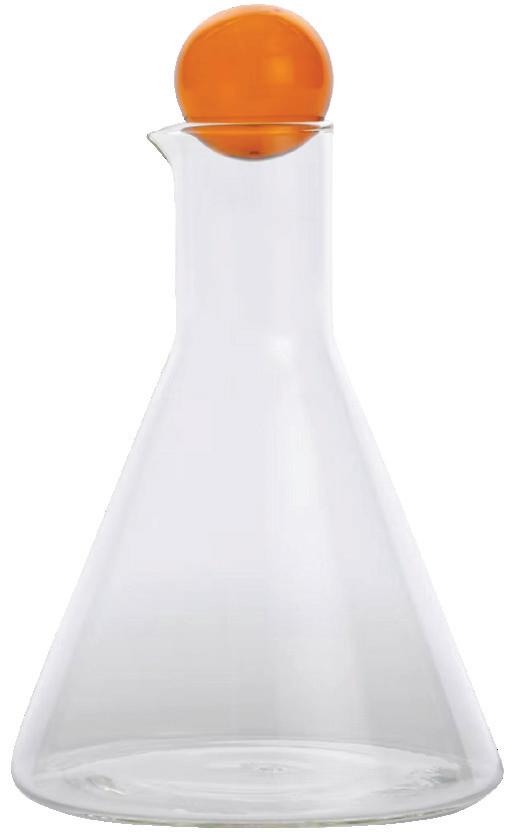

/ The Bonfire 2.0, also from Solo Stove, is a stain less-steel fire pit built for the backyard and beyond. It weighs only 23 pounds and comes with a carrying bag to take to the beach, campsite or nearly anywhere else. —$239, Solo Stove
3
5 / The Bilboquet Carafe is a stylish—if not scientific —vessel that helps anyone aerate wine like a pro. Use it as a whisky decanter or to serve beverages. The borosil icate glass resists heat and cold, and the amber spherical glass stopper is stunning.
—$115, Design Within Reach
6
/ Bala Bangles make rucking fun with a belt of 1or 2-pound weights worn on wrists or ankles, adding in creased resistance to a workout indoors or outdoors. Made of recycled steel wrapped in silicone.
$55, Shop Bala
9 / Lexon’s Oblio, a wireless smartphone charging station with built-in UV sanitizer, looks like a cup but provides a full charge in three hours while eliminating “99.9% of your smartphone screen and surface germs in 20 minutes,” according to the manufacturer. —$80, Lexon
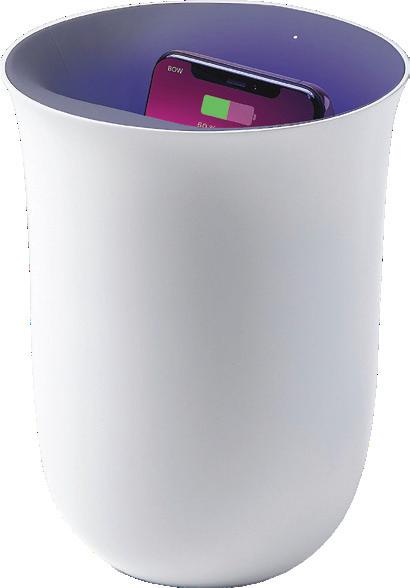
7
/ The Theragun Wave Solo Vibrating Massage Ball, considered a “modern take on traditional lacrosse ball massage,” features three vibration settings and smart connectivity in a portable package. It uses pinpointed vibration therapy to reduce pain and ease tension.


$79, Therabody

10 / The JBL Go 3, a portable and waterproof pocket-friendly wireless speaker, has good sound for the beach and hiking trails. But if you drop it into a pool, it doesn’t float. At less than a half pound, it’s easy-to-carry bluetooth sound.

—$30, JBL
8
/ The Theragun Mini puts a portable massage in your pocket. The hand-held muscle massager digs deep for sore muscle relief.
$179, Therabody
11 / The Boundless Audio Record Cleaner Kit com bines a record brush and stylus brush. Its carbon-fiber bristles safely and gently remove dust and dirt from the vinyl surface, no liquid required.
—$25, Boundless Audio



12 / Grouphug Window
Solar Charger, an easy-to-in stall, hanging 10W solar panel, charges a variety of devices with the power of the sun. The panel comes with a suction cup hook for any window and a rechargeable 3,400-mAh battery with a USB cable.
—$150, Grouphug Solar
13 / The Ridge, a minimal ist, front-pocket wallet, is de signed to remain slim but can expand to hold up to 12 credit cards. The wallet’s made from a durable blend of resin and carbon fiber that’s also used in golf clubs and sports cars.
—$150, The Ridge
Luckbox’s editorial director savors this mix of 10 luxuries and necessities

The essential hat for those who favor function over fashion. The durable, waxed, all-weather Field Hat is finished with a leather hat band and eyelets for airflow. Available in tobacco, whiskey, hardwood and rye brown. In between sizes? Take the larger of the two.
—$125, Tom Beckbee

Enjoy nine-plus hours of outside-to-bedside cordless illumination from this stylish touch-on/off, dimmable LED table lamp. The Pro Mini is available in seven powder-coat finishes and includes a con tact charging base with a USB and a one-year warranty.

—$159, Zafferano America
Vortic, an artisan watchmak ing company founded by a direct descendant of Amer ican Civil War Gen. George Armstrong Custer, has a classically American entre preneurial story. It transforms U.S.-made railroad pocket watch mechanisms into one-of-a-kind timepieces. —from $2,495, Vortic Watches
4
Hands down, this is the ulti mate vessel for experiencing fine spirits. The Cradle Glass fits comfortably into your hand, and its seductive curves radiate, aerate and liberate your best drams by directing the organic aroma to the nose. Whisky drinkers—this will be your go-to glass.
—$41, Cradle Glass
These candied cherries soaked in Luxardo marasca cherry syrup have no preser vatives—the dark red color is all natural. Used by the worlds’ best mixologists in the finest bars, the syrup and the fruit are the secrets to any great Old Fashioned. Also ideal over ice cream.
—$19, liquor stores
The Plasencia family has been growing tobacco for prestige brands like Rocky Patel, Gurkha and Romeo y Julieta for six generations. But only the most skilled rollers can handcraft a Salomon size cigar. Plasencia’s premium Nicaraguan blend delivers hints of cocoa, leather and spice.
—$21, fine cigar stores
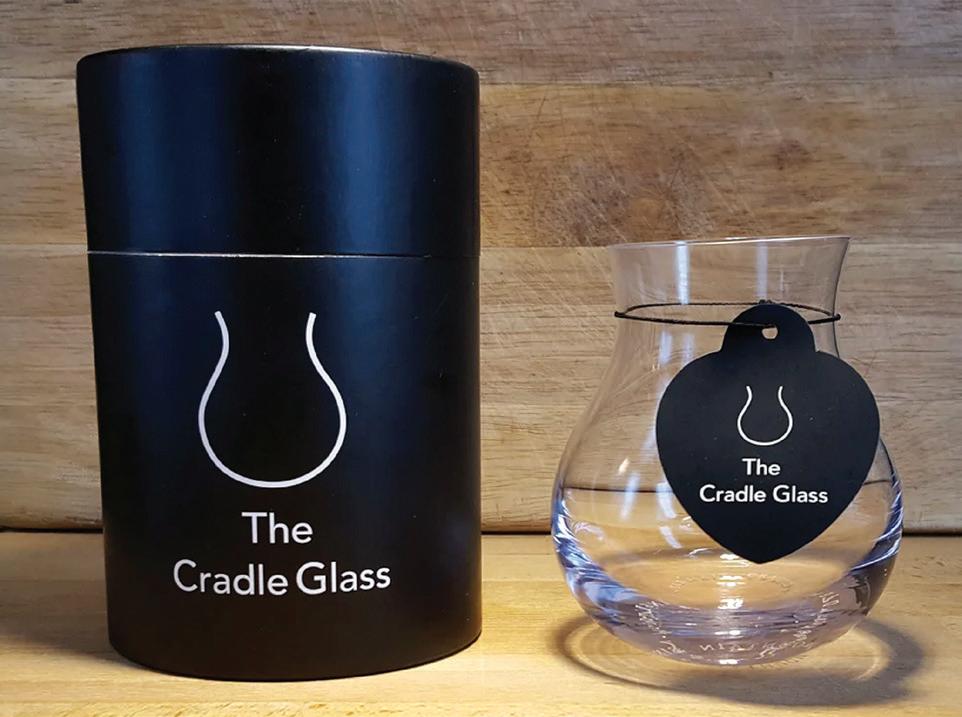



This four-album set curates Thom Yorke & company’s best songs from their 1993 debut Pablo Honey through 2007’s In Rainbows, featuring songs Paranoid Android and Karma Police. And, yes, Creep is included along with 26 other favorites from England’s best post-Beatles rock band. Available in near-mint, preowned condition.
—$199, Discogs


Ever since author Tim Ferriss convinced us that the kettle bell could be the only all-body exercise anyone would ever need, we’ve been hooked. But as you get stronger, you must move up in weight. The practical SelectTech offers 8-, 12-, 20-, 25-, 35- and 40-pound options. —$149, Bowflex
The shifting weight inside the RMT Club creates dynamic resistance through fluid movement exercises designed to engage your entire body. The Club reduces the risk of injury, and it’s used by pro athletes and trainers in virtu ally every sport. Start with the 4-pounder. —$110, Amazon, WeckMethod

Buy this for yourself. A 2018 study of 1 million people identified a causal relation ship between poor oral health and the risk of heart disease. Sonicare’s 4100 runs much more quietly and has a longer-lasting battery than its peers. That’s why it’s consistently rated the best electric toothbrush.
—$39, Phillips



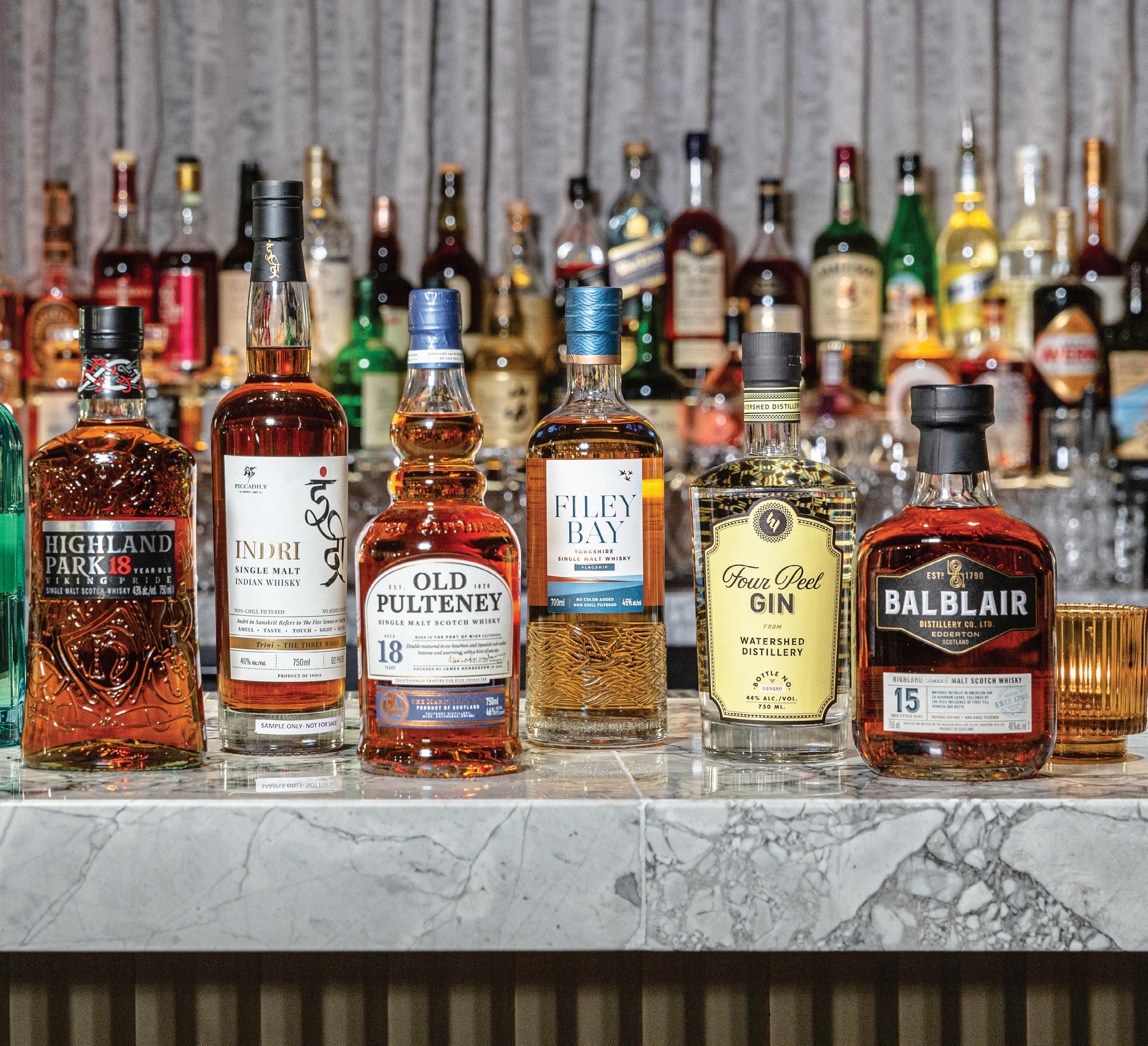
Luckbox turns to expert David Sweet to help curate our annual selection of the best spirits for holiday gifting. He and his panel of experts meet each year with consumers for blind-tastings to identify best-in-class bottles for the Whiskey and Barrel Consumer Choice Awards. Find more winning whiskeys and other spirits at wabcca.com.
Matured 18 years entirely in Sherryseasoned oak casks, this Speyside single malt earned 98 points and ranked No. 3 in the “Top 100 Spirits of 2020 & Chairman’s Trophy for Best Speyside Single Malt” in the Ultimate Spirits Challenge, 2020. A Luckbox favorite.
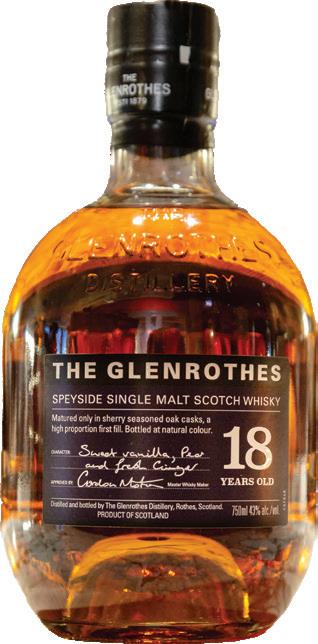
The music industry changes every day—whether it’s an album release, worldwide tour announcement, company merger or the sale of music rights. Music platforms and businesses are volatile, and next year won’t be any different. With all that in mind, The Rockhound has four music predictions to keep an eye on in 2023.
TikTok, launched in 2016 by the Chinese technology company ByteD ance, enjoyed an intense boom in engagement in the pandemic years of 2020-2021 and hasn’t slowed down since. As of August, the app reached 1 billion active users spread across 154 countries. Music has been a prominent factor in bite-sized videos, either as back ground or groundwork for choreographed dances.

Besides providing a home to social media influencers, the platform has advanced the musical careers of Claire Rosinkranz, Dixie D’Amelio, Powfu, Priscilla Block and Tai Verdes—helping them sign with major record labels. This year, TikTok launched its own promotion and music distribution platform called SoundOn, and it’s even searching for people to fill A&R (artists and reper toire) roles in major cities, as reported by Music Busi ness Worldwide. The A&R people would be respon sible for talent scouting on the platform. Now the question is whether TikTok can compete with major record labels.

Surviving members of the English rock band Pink Floyd are considering the sale of their recorded music catalog. This photo of four members is from 1968.
English rock band Pink Floyd is reportedly considering selling the rights to the band’s recorded music catalog, and The Rockhound predicts they’ll be the next legendary rockers to do so, following the trend of the past three years.
It’s not unusual for musicians to make a deal and hand over the rights to their music as they get older. It’s just been happening at an increasingly rapid pace.
Bob Dylan collected $300 million in 2020 in a deal for his songwriting rights with Universal Music Group, according to the New York Times. Dylan also received an estimated $200 million in a deal for his recordings with Sony Music/Columbia, according to Billboard, although financial terms of the deal were not disclosed.
In August 2021, Aerosmith made a deal with Universal Music Group that moved its Sony Music recordings into a distribution pact with UMG. It covers their entire music catalog, merchandise and audio-video projects.
At the end of 2021, Bruce Springsteen received $550 million from Sony Music Group for both his publishing rights and his recorded music catalog.
The David Bowie estate announced early this year it was moving the late artist’s “entire recordings catalog inside a distribution deal with Warner Music Group,” according to Music Business World wide, for a reported $250 million.
The video-driven app TikTok is taking its own approach to music discovery with SoundOn, and it’s hiring full-time A&Rs (artists and repertoire representatives).
While senior figures in the business are calling for TikTok to adopt a revenue-sharing approach to licensing deals with large rights holders, The Rockhound predicts TikTok will develop a vertical integration strategy for music licensing rights and shift its focus toward artist discovery. The platform is recruit ing employees for positions that resemble the jobs in record companies, and The Rockhound predicts they’ll officially head down that path by the end of 2023.
Pink Floyd is expected to fetch a nine-figure sum if it’s sold, Music Business Worldwide reported.
The Beatles, Stones and Zeppelin were awesome—but rock lives on. Why not break out of the classic rock cocoon and give new rock a chance? Rockhound is here to help. Think of it as a bridge from 1967 to today and beyond.
Revenue will keep increasing, long-established artists will continue to sell the rights to their catalogs and TikTok will operate even more like a record label.Brandi Carlile
TikTok is helping indie artists sign with major labels.
Indie music reached a high point of commer cial success in the mid ‘90s when the Britpop genre achieved immense popularity. It focused on guitar-led indie-pop/rock and meaningful songwriting about class, politics and culture.
Through the years, the definition of indie music has gotten a bit muddled, but it essen tially refers to independent artists signed to
such as the Arctic Monkeys and the Yeah Yeah Yeahs touring and releasing albums, it’s likely other indie musicians will become popular.
The number of independent musicians is rising, too. In May 2019, 1,560 full-time independent musicians were working in the U.S., up from 1,290 the year before, accord ing to Statista. With the apparent decline of the pandemic and the industry’s technologi cal advancements, that number has likely surpassed 3,000 full-time inde pendent artists.
Globally, independent labels and musicians’ share of the market increased by 43.1% in 2021—an all-time high. Indie labels and artists generated $9.9 billion in 2021, MidiA Research estimates. And artists-di rect (self-releasing artists) were big winners, earning $1.5 billion and increasing their market share to 5.3%.
The Rockhound predicts indie labels and artists will generate $10.5 billion this year, and that artists-di rect will surpass $2 billion.
In March, Luckbox reported vinyl records outpaced CDs in physical music sales for the first time in 30 years. In fact, vinyl became the leading format for all album purchases in the U.S.—thanks to the indie sector. As that sector continues to grow in 2023, The Rockhound expects phys ical music sales in general to grow as well.
With the pandemic seemingly in the rearview mirror, music fans are getting out of the house and enjoying live music again.
The market for in-person performances is expected to grow by 85.3% this year to $26.5 billion, Goldman Sachs predicted in June.
But that comeback won’t bring spending on live music up to the level of music streaming, which could reach $37.8 billion this year and $89.3 billion by 2030, Goldman Sachs predicted.
Listeners will continue to increase their spending on streaming in the coming years, but catalog acquisition might slow down, according to the financial services giant.
independent labels instead of major labels.
Definitions aside, there’s never been a short age of indie artists, but as more indie labels develop and musicians become more fluent in music technology, production and distribu tion, indie artists are on the rise.
With bands like Wet Leg commanding the world’s attention despite being signed to indie label Domino Record ing Co., there’s no doubt more indie artists will rise in popu larity in the upcoming year. The Rockhound predicts indie artists will become more prom inent than ever before, with a heavy focus on layered guitar progressions.
Looking at the reemergence of indie artists

Vinyl was responsible for 38.3% of all physical and digital album sales in the U.S., MRC Data and Billboard report. Vinyl accounted for 50.5% of all physical albums, with around 41.77 million sold in 2021, up 51.4% from 27.55 million the year before.
In spite of the popularity and ease of streaming and downloading music digitally, tangible forms of music, such as CDs, vinyl records and cassettes, are growing in sales and getting wider distribution.

of the year. Over the same period in 2021, 18.8 million were shipped.
As of July, music fans had bought more than 19 million vinyl records for the year. U.S. vinyl sales rose 22% in the first half of the year, according to the Recording Industry Association of America’s mid-year music revenue report. As of September, the number of vinyl records shipped climbed 15.7% to reach 21.8 million records for the first half
The Rockhound predicts vinyl will round out 2022 with more than 50 million sold in the U.S., accounting for 60% of all physical album sales—not bad for a medium once on life support.
Kendall Polidori is The Rockhound, Luckbox’s resident rock music critic. Follow her reviews on Instagram and Twitter @rockhoundlb.
Vinyl will continue to go viral.Indie rock duo Wet Leg of the Isle of Wight has taken the music industry by storm this year with hit singles that include Chaise Lounge and Wet Dream
Afew years ago, Shevy Smith and Khalid Jones opened an artist development company in Los Angeles to work directly with musicians to release and promote their music. But they soon realized the barrier in music promotion. Spotify was releasing about 40,000 songs every day. Now, it’s more like 80,000.
“I’ve always found it puzzling,” says Smith, “that for such a creative busi ness, there are still only two or three paths that people can take for artist discovery or for artists to get their music heard by an audience.”
That’s why she and Jones came up with incen tivized listening. It’s the intersection of music, tech, gaming and lotteries, and it’s being released as The Ultimate Playlist.
It’s powered and owned by the Arizona State Lottery and was developed by Elite Shout, a music tech and production company. Think of it as a free app available for users 18+. It will provide “devel oping artists with a viable channel for reaching new fans and valuable data about how their music is being consumed,” according to a press release.
The app also awards a minimum of $2,000 a day to 18 lucky winners and offers a chance to win a $20,000 jackpot.
The creators raised $2 million from The Arizona Lottery to finance The Ultimate Play list, a sum they say covers the cost of develop ment, prizes and marketing. A patent is pending.
The heart of The Ultimate Playlist is in incen tivized listening, Jones says, which means users get something in return for listening to music.
Every day, a playlist of 40 songs will appear on the app, and the more users listen, the more tickets they earn. The tickets go into that day’s raffle. They’re not required to listen more than they want, but engaging in the maximum yields more chances to win. It’s for anyone from a casual listener to a dedicated, engaged player and listener.
However they’re categorized, users earn one ticket for listening for 30 seconds. Hearing an entire song earns three tickets. Adding a song to a playlist outside the app, such as Apple Music, earns another two tickets. Eight tickets win the daily cash draw, but the Ultimate Payout provides a $20,000 jackpot. Each month that no one wins the jackpot, another $5,000 is added.
“So, if you listen to 30 seconds of half a playlist, you get one entry into [the jackpot], and it’s in a Powerball style to pick your lucky numbers,” Smith says. “And then if you listen to 30 seconds of all 40 songs, you get two more entries. So for no money down, you get up to three chances a day to win $20,000, which is pretty significant.”
For the first few months of opera tion, the team behind the app will choose the 40-song play lists. Smith says they have come up with a formula that takes into account each musical genre’s market share in the indus try. She says the playlists will also have a good blend of new and under ground artists, as well as more popu lar artists.
By curating the playlists, Smith says they’ll be able to collect solid data points that identify an artist’s listeners. After the first few months, artists and their teams will have the opportunity to submit songs to appear on the playlists. That creates “incremental wins” for both musi cians and listeners, she notes.
“It’s creating a buzz,” Smith says. “When you’re in that middle class of artists, it can be hard to generate that kind of engagement every day.”
Artists spend part of their promo tional budgets to get songs on the app, and then that money goes back to the listeners. “That’s something that hasn’t been part of the music
landscape before,” Jones says.
“Up until now,” he continues, “a listener was just viewed as a consumer of a product, and we’re sort of turning that on its head by saying, ‘No, you can be part of that ecosystem, too.’”
Besides exposure to more fans, The Ultimate Playlist provides multiple benefits for musicians, Jones says. Having only 40 songs on a playlist each day puts indie artists on the same ground as stars like the Red Hot Chili Peppers, whose new songs might appear on the playlist.
The playlist is also guaranteed to attract human beings who are potential fans who might buy concert tickets. It’s not a 15-second TikTok but instead a “throwback to when people would listen to full songs,” Jones says.
That exposure and support for artists is important to Smith and Jones, but so is the inter section of industries.
“It shows that you can think creatively,” Jones says. “A lot of times [Smith] and I look at the music industry, which is inherently creative, and sometimes the solu tions don’t seem that creative.”
But for Jones, the playlist represents something new. “I think part of the importance,” he says, “is that there are different industries that you can choose to work with to reach your customer. The idea to use your listening as the currency itself is novel.”
The Ultimate Playlist, a mashup of the newest in music, gaming and lotteries, is easy enough to understand.
You listen to music, earn tickets, and automatically become eligible for a daily cash drawing of $2,000 and a chance at the Ultimate Payout Jackpot, which is starting at $20,000.
Your account is free. You just provide your name, phone number, email address, a username of your choice, birthdate, gender and zip code. About the only requirement is that you must be 18 years old or older.
Each day, a playlist of 40 songs appears on the homepage. Users can easily play, pause, save or skip songs, but it allows skipping only six songs in an hour. The app automatically assigns tickets and chances for the drawings based on how long you listen to a song or how many songs you hear. There’s no extra step to earn prizes.

Musicians range from the little-known but up-and-coming to familiar names like Jack Harlow, Elvis Costello and Blur. Put another way, the playlists furnish listeners with a taste of new music and artists to explore, while still offering something they might already know and enjoy. The playlist blends genres and eras.
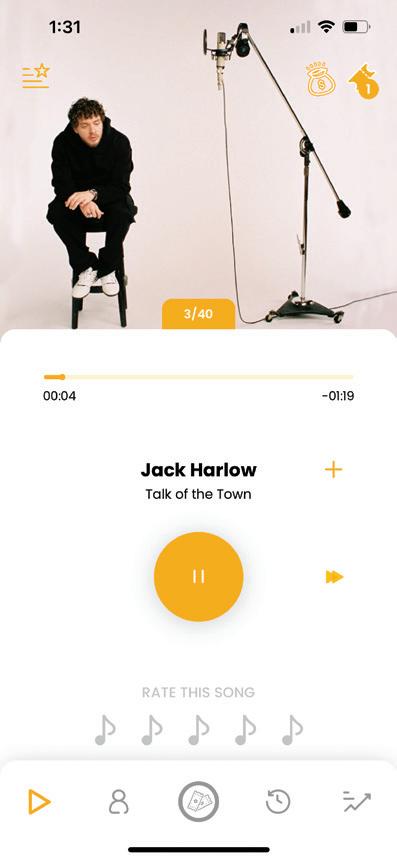
In its purest form, The Ultimate Playlist is ideal for music discovery, with a bonus in possible cash prizes. It’s free from labels and specific aesthetics, making each song a surprise. The hope is it doesn’t stay too broad or impersonal. It’s about discovering art, not winning a ticket.
To promote the discovery of an artist, the app might need to create a variety of playlists with different “vibes.” That could encourage listeners to stick around for more than the chance of scoring some cash.
jackpot.
What gets measured, gets managed. Know the five key fitness performance indicators.
 By Jim Schultz
By Jim Schultz
Do you want to get into the best shape of your life in 2023? Let’s take a data-driven approach to that objective and get a jump on everybody who’s waiting until Jan. 1 to get started.
There’s a saying in the business world that “what gets measured, gets managed.” In other words, whatever you track and record is what you ultimately prioritize.
Without knowing your situation, it’s impossible to give you a perfectly customized protocol for getting into shape. But if you start with these suggestions for handling five key performance indicators (KPI), you’ll build a firm foundation—one you can adjust later.
Most people have no idea how much they’re eating or how that food is broken down into its parts: protein, carbohydrates and fats. If you’re serious about getting into shape, you can’t leave nutrition to chance.
Instead, track everything you eat. Start by consuming 1 gram per pound of bodyweight in protein, 60 to 70 grams of fats and the remain der in carbohydrates to reach a daily caloric intake of 12 times your body weight. When your progress slows (see Fighting Fat), start pulling 5% to 10% from carbs and fats for the week and reassess.
Very simple—lift weights three to five times a week. Do eight to 12 working sets per muscle group per week, with six to 15 reps per set. If you like train ing with heavier weights, lower the number of reps per set. With lighter weights, increase the reps per set.
Or, if you’re knocking on death’s door like I am (age 41), just do what ever your joints will allow.
The important thing is that you’re consistent and put some oomph into your sets. So, ensure every working set approaches at least three to four reps from failure.
If you like cardio, do it. If you don’t like it, don’t do it. It doesn’t matter.
The important thing is that your body is moving, so keep it simple and just track your daily steps. Start with an easy goal: 5,000 steps per day. Work your way up to 5,500, then 6,000, then 7,000, then 8,000.
Drink half your body weight in ounces of water per day—minimum. Not only will you feel amazing and alert, but all the calories you’ll burn after running to the toilet every 45 minutes will shave at least a week off your total dieting time.
Sleep seven to eight hours a night— minimum. Yeah, I know, you’re the busiest person the world has ever known. I don’t care. Do it.
Each week, you should lose about 0.5% of your body weight, on aver age. The progress will not be linear, with big losses in the early weeks and little progress at the end. If you stall for a week, don’t change anything. If you stall for two weeks, start cutting your fuel sources (carbs/fats).
It’s tempting to try to go faster but don’t. In the same way a rubber band builds tension as you stretch it, the harder you push with your calories, training and activity, the greater the potential snapback. You can undo weeks of progress in one late-night pizza bender.
There you go. The plan is set. Now, all that’s left is to do the work.
Jim Schultz, Ph.D., a derivatives trader, fitness expert, owner of livefcubed.com and the daily host of From Theory to Practice on the tastytrade network, was named North American Natural Bodybuilding Federation’s
Calories are simply units of energy, and each component of a calorie commands its own caloric demands. Protein is 4 calories per gram, carbohydrates are 4 calories per gram and fats are 9 calories per gram.
Determine your caloric intake needs by multiplying your body weight by 10-12 if you’re looking to get leaner, or 13-15 if you’re looking to get bigger.
So, if you’re 200 pounds and want to get slimmer, your daily caloric needs would be between 2,000 (200 x 10) and 2,400 (200 x 12).
Working with 2,400 calories, you would determine your individual macro targets as follows:
Two hundred pounds at 1 gram per pound of bodyweight in protein = 200 grams protein, which would be 800 calories (200 grams x 4/cals per gram).
Let’s say you target 60 grams of fats, which would be 540 calories (60 grams x 9/cals per gram).
That leaves 2,400 - 800 - 540 = 1,060 calories to allocate to carbohydrates.
> > > > > > >
If your weight loss stalls for a week, don’t change anything. If you stall for two weeks, start cutting your fuel sources (carbs/fats).You can undo weeks of weight loss in one late-night pizza bender.
Avatar didn’t just surpass the $2 billion box office record in 2009—it totally obliterated it by grossing $2.7 billion. Ahead of the film’s sequel Avatar: The Way of Water, set to hit theaters Dec. 16, the original film was rereleased in theaters around the world, opening with $10 million in domestic ticket sales and $30.5 million worldwide.
The original Avatar was nominated for nine Academy Awards, including Best Picture and Best Director, according to Deadline Hollywood, an online news site. It went on to win three Oscars—for Best Cinematography, Production Design and Visual Effects.

The original cast has returned for the sequel, including Sam Worthington, Zoe Saldaña, Stephen Lang, Michelle Rodriguez and Sigourney Weaver. Three more films are scheduled in the series, and they’re slated for release every two years. Avatar 3 is expected to open in December 2024, Avatar 4 is set for release in December 2026 and Avatar 5 is scheduled to open in December 2028.
Fizz,
Champagne wasn’t at the top of many shopping lists in 2020— apparently people didn’t feel like celebrating the pandemic. Sales fell by 18% from the year before and finished the year with revenue of $4.8 billion and total bottle sales of 244 million.
In 2021, however, Champagne sales soared 32%, with 322 million bottles purchased worldwide. But the resurgence, combined with other factors, has resulted in shortages that could last for years, according to Wine Enthusiast. The magazine blames an “increase in demand, diminished grape harvests and a disrupted supply chain due to the pandemic.”

Fueled by inflation, prices for prestige cuvee Champagne labels rose in 2021 and have continued to go up this year. Nevertheless, in 2021, France landed the No. 1 spot for buying the most champagne in the world with 102,200 million liters. The U.S. was No. 3 with 20,500 million liters. The current best-selling bottle in the U.S. is Veuve Clicquot, which has seven categories of Champagne. Meanwhile, the world’s most expensive bottle of Champagne recently sold complete with its own non-fungible token, or NFT. It was Champagne Avenue Foch 2017, and it brought a price of $2.5 million.
Swedish chemist, engineer and industrialist Alfred Nobel laid the groundwork for the Nobel Prize in his will, stating the honor should be bestowed upon “those who, during the preceding year, have conferred the greatest benefit to humankind.” The first Nobel Prize was awarded in 1901.

Today, there are six categories: Physics, Chemistry, Physiology/Medicine, Literature, Peace, and Economic Sciences. Each award includes a gold medal, a diploma and a cash prize. To date, 615 Nobel Prizes have been awarded to 989 laureates because the award sometimes goes to teams instead of individuals. Sixty awardees have been women and 27 have been organizations. The youngest laureate was 17 and the oldest was 97.
Five scientists have won two times, but The International Committee of the Red Cross has won the most awards, pulling off the feat four times in 1901, 1917, 1944 and 1963. The U.S. has had the most recipients with 400 laureates.


Ever wanted to own a stock for less than its current price? Or would you like to collect income while waiting for the price to decrease?
There’s a way to do both while putting up less money than it would cost to buy the shares outright. It may sound too good to be true, but it’s achievable via a simple options strategy known as a short naked put.
Short naked put features:
• It obligates the seller to buy 100 shares of the underlying asset at the strike price any time before the expiration date.
• There’s a defined maximum profit; The credit received for selling the put.
• Downside risk is the same as the stock if the price falls below the strike price.
• They’re used by investors who have a bullish stance on the stock.
The ideal time to trade a short put is when implied volatility (IV) and the implied volatility rank of an underlying are high.
When IV is high, the premium collected is higher, so the breakeven for the short put is lower and investors benefit more from a potential decrease in IV.
It’s common to sell out-of-the-money short puts because the premium is composed entirely of extrinsic value. As time passes and volatility decreases, the seller of the put will profit as the price of the option falls.
A good balance of risk and reward may be selling a short put with a delta of between 16 and 30, but investors can adjust that based on their own tolerance for risk and expectations for return.
Managing the strategy’s risk:
• The risk is to the downside.
• A decrease in stock price can force the put seller to buy the shares at the strike price.
• If the stock price falls below the strike price: – Close the trade by buying back the short put
– Add more time by buying the short put back and selling another short put in a longer-dated expiration cycle, a practice known as rolling a trade
– Own the shares outright, which means buying them on assignment

Here’s an example based on Apple (AAPL):
• Assume Apple has a share price of $145.
• An investor could sell a 30 delta put with a strike at $135 for $4 per share.
• There’s a total of $400 of initial credit.
• Breakeven would be $131 ($135 - $4), 10% lower than the current stock price.
• Breakeven represents the investor’s effective share. purchase price if the stock goes below the strike price and the investor decides to take assignment.
Intermediate to advanced An algorithmic trade-hunting system that focuses on strategic premium-collecting strategies. Timely trades are focused on active stocks and ETFs with robust options markets. Three emails per week.
SIGN UP AT QUIETFOUNDATION.COM/ALPHABOOST







STOCKS/ETFS,
Basic to intermediate
A quantitative newsletter on the markets from tastytrade’s research department. Each week, the team discovers new opportunities and trade ideas. Also a quarterly earnings edition. Every Tuesday.
SIGN UP AT TASTYTRADE.COM/CHERRY-PICKS
STOCKS/ETFS, OPTIONS & FUTURES
Basic to intermediate Options? Futures? Implied volatility? This essential knowledge platform provides comprehensive online courses that teach the crucial concepts, strategies and mechanics that make successful traders.
VISIT TASTYTRADE.COM/LEARN
STOCKS/ETFS, OPTIONS, FUTURES & CRYPTO
Basic to intermediate Premarket analysis direct to your inbox! Daily analysis before the opening bell. tastytrade co-founder Tom Sosnoff kicks off every week followed by chief quantitative strategist Tom Preston. Five emails per week.
SIGN UP AT TASTYTRADE.COM/NEWSLETTERS
FOREIGN EXCHANGE, FUTURES & COMMODITIES
Basic to intermediate
A global digital publisher with news, analysis, educational content and tools for active traders and investors. DailyFX’s global team of analysts provides hourly updates from a variety of macro perspectives, fundamental and technical analytics.
VISIT DAILYFX.COM
Intermediate to advanced Backtest your stock option trade strategies. You can see how well they would perform historically by providing insight into the average profit/loss, the win rate and the maximum loss that the strategies saw, along with other metrics. In addition, lookback allows you to forecast the potential profit and loss before you enter a trade, so you can better understand how changes in price and time impact potential positions.
VISIT TASTYTRADE.COM/LOOKBACK
STOCKS/ETFS, OPTIONS, FUTURES, CRYPTO
Basic to advanced Sixty hours of live, educational, yet often irreverent, original programming each week. More than 20 on-air traders provide financial information, investment strategies and entertainment related to stock and options trading. Actionable information rooted in research and experience.
VISIT TASTYTRADE.COM


Palantir Technologies (PLTR) has been a much-debated battleground stock ever since its initial public offer ing a little more than two years ago. The company offers software that predicts the probability of crime, terrorism and other events.
This chart shows a recent fry pan bottom pattern, a slow-rounding pattern that points to a buildup of bullish sentiment. The expected result is a strong price move to the upside.
The J-hook pattern that accom panies it is a prerequisite of a strong price move, then an indecisive pull back, followed by a new bullish wave. A bobble breakout is a more definitive J-hook pattern.
The first price move fails at an obvious resis tance level, such as a moving average. It pulls back, usually using the T-line as a support, and then comes back up through the resis tance level.
The bobble breakout pattern produces better bullish probabilities because everybody watches to see whether it will breach the resis tance level.
Active investors might consider buying Palantir when it comes up through or closes above the 50-day moving average at approx imately the $8.40 level. Once the stock closes above the 50-day moving average, a long position should be closed if it subsequently declines and closes below the 50-day moving average.
Stephen W. Bigalow, a veteran of 45 years of trading, directs a candlestick analysis learning forum at candlestickforum.com.
Extreme prices can make an active investor salivate. Contrarians and trend followers alike tend to view hamburger meat as Kobe beef if the market is climbing to an all-time high or descending profoundly lower—the more extreme the move, the better.
So, let’s pursue the meat metaphor. Think of 2021 as an 8-ounce filet mignon and the last decade as a 22-ounce dry-aged ribeye. The last 30 years? How about a 48-ounce porterhouse for two?
In 2022, the U.S. dollar market seemed like the porterhouse on the menu because it enticed too many investors to bite off more than they could chew. The dollar reached new multi-year highs against a whole host of currency pair partners, including majors like the euro, British pound and Japanese yen.
Why the U.S. dollar’s appreciating Inflation data, which has been highly correlated with dollars in recent years, is also reaching multi-year highs and causing central banks across the globe to consider more aggressive interest rate hikes. Theoretically, higher interest rates disincentivize spending and can thus curb inflation.
The U.S. central bank—the Federal Reserve or Fed—has been hiking rates more aggres sively than its counterparts in other major economies, which has sent many foreign funds into U.S. dollars to invest risk-free at higher interest rates.
So, while inflation has led to currency depre ciation for many countries, the U.S. dollar market has been the true outlier in more ways than one, given the relative strength of the U.S. economy.
U.S. dollar historical highs vs. major currencies
Currency Pair Extreme Since EUR June 2002 GBP February 1985 JPY July 1990
Source: IG Group
Any active investor who’s studied implied volatility (IV) or simply looked at a histor ical chart of the VIX—the Chicago Board Options Exchange’s volatility index—has likely dreamt of retiring early after buying low and selling high.
Though it’s hard to achieve financial inde pendence, the theory is sound: VIX is a mean-reverting market; VIX can move far from its mean in times of great fear or lack thereof; and VIX has always come back to its mean at some point Currencies—and interest rates for that matter—share many mean-reverting quali ties, and they have since long before VIX was a market. Take the euro-U.S. dollar (EUR/ USD) market, for example.
Since 2005, the exchange rate between euros and dollars has traded as high as $1.50 and as low as $0.95—approximately where the market is now. The average price has been around $1.25. Like VIX, the currency market has reversed course in dramatic fashion from both historical highs and lows.
While it can be more interesting to predict a new normal, history repeats itself more often than not and history says the U.S. dollar is due for a collapse.
While it can be interesting to predict a new normal, history repeats itself more often than not.
With sharp rallies and extended depressed periods, volatility eventually reverts to its mean. Jan


Data

Any active investor who has traded implied volatility via options or a VIX product has likely lost money by being right directionally with the wrong timing.
The most clairvoyant economist could fore cast a 50% drop in VIX, and a single bearish position could wipe out thousands before the prophecy came true.
Looking back upon history again, U.S. dollars have traded around similarly high highs against the Japanese yen twice since 1990 and stayed at those extremes for an aver age of six months.
The last time EUR/USD broke below parity, dollars held the upper hand for nearly two years.
The FX market was in extreme territory for three months when Luckbox went to press, which might make a 2023 U.S. dollar rever sion a good bet for investors who can ride out the short-term turbulence.
There’s almost always a price extreme on the menu. But even though this year is one of the juiciest in recent history, don’t be a glutton.
Frank Kaberna, senior content strategist for IG Group North America, is an expert in futures, options and currency trading. @frank_kaberna
The euro now sits at a multi-decade low.

The ink is still wet on the midterm ballots, which can only mean one thing: The 2024 presidential campaign is now in full swing. So let’s start there with our assessments of upcoming prediction markets.
2024 Presidential match-up: Gov. Gretchen Whitmer (D-MI) vs. Gov. Ron DeSantis (R-FL)
With two pseudo-incumbents in the mix— President Joe Biden, the actual incumbent president, and former President Donald Trump, the one-termer who insists he remains the rightful officeholder—it may seem odd to foresee neither at the top of this ticket but it’s unlikely either winds up running, much less winning the nomination.
While they have large, durable bases of support and are the only two eligible humans with presidential experience—save Jimmy Carter, who will turn 100 a few days before the election—I’m hard pressed to believe either actually wants to return to the job.
While slightly younger than the peanut farmer, they’re obviously of a certain age now. They’ve both endured unpleasant terms in office and their respective party establishments clearly (if quietly) join them in pining for their overdue retirements.
Neither has any incentive to hint at wanting nothing more to do with the White House just
yet, but the time to drop the ruse will be upon us before long.
As for their replacements, DeSantis seems nearly unstoppable on the Republican side without Trump in the mix, judging by unfath
omably outsized fundraising, polling (where no one else registers double-digit support) and prediction market pricing.
The Democrats will put on more of a show, but their bench is similarly thin. Warmed-over 2020 quarterfinalists from the U.S. Senate ranks (Massachusetts Sen. Elizabeth Warren, Minnesota Sen. Amy Klobuchar, Vermont Sen. Bernie Sanders) have been weighed and measured enough at the national level by now.
U.S. Secretary of Transportation Pete Butti gieg and California Gov. Gavin Newsom should have a decent showing. But as a female gover nor from a purple, non-coastal state Demo crats need to hold, Michigan Gov. Gretchen Whitmer, seems like the right formula.
We won’t officially know the nominees at this time next year, but expect Whitmer and DeSantis to be in pole positions.
After arriving late to the party, the Federal Reserve has consistently promised rates will go as high as needed to combat this non-transi tory inflation, and it’s taken a while for markets to take them at their word. (I’m not sure they do even now.)
Wherever they pause, it’ll be at an econom ically restrictive level, something we haven’t seen in quite some time. With growth already flat-to-negative, this almost surely tips us into a less debatable recession. Most Americans haven’t seen stagflation in their lifetimes, and I don’t expect them to love it.
There’s still a decent chance the
will be shallow or brief, but it’ll be enough of a bummer that the economy will remain the
> 8.9% 4 %
Between 8.0-8.9% 29 %
Between 7.0-7.9% 62 %
Between 6.0-6.9% 7 %
Between 5.0-5.9% 1 %
dominant political issue. Expect 2024 battle lines to be drawn on this front.
Neither side will persist in pretending the economy is better than it is. We’ll spend our deliberative energies arguing over whose fault it is.
Without rehashing the various state and federal cases underway, there’s just too much well-worn tomfoolery afoot in Trumpworld (both political and corporate) and too much political will for him not to go punished and skate forever.
American Civics Exchange has launched an over-the-counter platform for betting on political events at otc.amciv.com. It enables eligible U.S.-based contract players to trade binary and combined outcomes and does not limit their wagering.
will be endless schadenfreude-laced popcorn for both camps. As Republicans reclaim the gavels in Washington, hearings and investi gations will bloom.
The prize they’re after will be to tie the pres ident (and specifically his international port folio as former President Barack Obama’s VP) to his son’s misadventures. But it’s more likely they’ll string him up only on one or more alleged tax and gun violations.
Politically, that’s largely baked in by now and will be rendered all the more moot once Biden announces he’s not running.
of the smaller trading venues and forecasting platforms from asking users to handicap the odds of World War III.
Some enterprising modelers have attached low-ish—but terrifying—odds in the mid-teens of the Russia-Ukraine war spilling into at least a limited nuclear exchange. Still, probabilistic, Bayesian forecasting tools are less useful at predicting events that have never happened before.
But doesn’t that mean such forecasts might just as likely be underestimating the risk? Well, maybe. But I’m still confident in predict ing we won’t see a globally catastrophic esca lation—if for no other reason than because I won’t be here to be held accountable if I’m wrong.
Flip Pidot, managing partner of Sharp Square Capital and CEO of the American Civics Exchange, focuses on event-based futures. He formerly served as market curator at PredictIt and as a forensic accountant for Arthur Andersen. @flippidot
Lest you think it’s all bad news, we won’t all die in 2023.
In the end, the indictment(s) will more likely be for alleged corporate misdeeds rather than political ones.
If Trump is bracing for this and suspecting he has a card to play in pledging not to run again (whether this is, in truth, a persuasive chip or not), that may further delay his bowing out of the 2024 race, depending on prosecu torial timelines.
All cable news ad reps can rejoice because there
While the Dodd-Frank Wall Street Reform and Consumer Protection Act of 2010 prevents regulated prediction markets and event futures exchanges from listing markets tied to acts of war, that hasn’t stopped some
Traders use prediction markets to bet real money on how events will turn out. Contracts trade between 1¢ and 99¢, and the price reflects the market’s consen sus forecast of the probability of a specific outcome. A contract trading at 43¢, for example, suggests the market believes the outcome has a 43% probability. When an outcome is reached, correct contracts pay out $1, and incorrect contracts expire with no value.
A menagerie of options strategies called zebras, lizards and spreads can help investors profit from a continued decline in stock prices in the new year
By Eddie RajcevicActive investors have become accustomed to managing their portfolios during up-trending markets. But after a turbulent year in 2022, they may be ready to bet prices for stocks, bonds and nearly every other asset class will continue to decline in 2023.
With that in mind, let’s examine three strategies for taking advantage of a downward market.
First, investors who want a short stock position but don’t have the capital or don’t want to allocate 50% of the stock value, can choose a capital-efficient alternative called a put ZEBRA.
It stands for zero extrinsic back ratio spread, and it doesn’t decay over time the way a normal long put option does.
The put ZEBRA consists of selling one at-the-money (ATM) put with a delta of 50 and buying two in-the-money (ITM) puts with deltas of 70. The ATM put is all extrinsic value, and the ITM puts are part extrinsic and part intrinsic value.
By combining the two positions, investors take advantage of the leverage from options without having to suffer the time decay that normally occurs with long options.
This trade is routed for a debit, meaning investors must pay to enter the trade. From a capital efficiency standpoint, they can place a put ZEBRA in SPY, the S&P 500 ETF (exchangetraded fund), for $2,800, whereas an equivalent short posi tion of SPY shares would consume $15,000 in buying power.


Another strategy for those looking to remain net premium sellers instead of buyers is the reverse jade lizard. It operates much like a strangle but removes the risk from one side of the trade, thus becoming more directional.
It’s constructed by selling an out-the-money (OTM) call and then selling an OTM put spread. As long as the net credit collected is greater than the width of the put spread, this trade has virtually no risk to the downside.
Because of the short call, this strategy carries net negative delta, meaning investors realize a profit if the underlying goes down.
In IWM, the Russell 2000 ETF, an investor could place a reverse jade lizard by selling the 30 delta call and put and buying the 25 delta put to limit the risk to the downside. The trade would collect $4.30, and the width between the 30 delta put and the 25 delta put is $4.00. So, even if the underlying goes past the long put, the trade will make a small profit.
Bearish investors looking for a higher probability of profit
Here’s
Profit/loss
Stock
This strategy adds a long put to the traditional strangle trade, mitigating much of the downside risk.
Profit/loss
Stock
may want to consider the call ratio spread. It’s created by buying one call closer to the stock price and then selling two calls farther from the stock price.
The two short calls must combine to collect more credit than the investor spends for the long call, creating a trade that can profit in any direction—otherwise known as an omnidi rectional trade. In other words, if the stock goes up, down or sideways, investors have an opportunity to make money.


Because this strategy is ultimately long a call spread and short a call, the risk is to the upside and the breakeven can be calculated by adding the net credit to the strike of the short calls.
The trade realizes maximum profit if the stock goes up slightly, but the directional bias as seen by delta is still negative, meaning investors would prefer the stock decreases in value.
In QQQ, the Nasdaq-100 ETF, investors can create a call ratio spread by buying one 30 delta call and selling two 25 delta calls. They can place that trade for a $3.50 credit with no downside risk and an upside breakeven 8% above the current price.
Investors can make money with this strategy regardless of the market’s direction—as long as the stock prices don’t move up too much.
$-250 $0
$-750 $-500
$-1250 $-1000
$250 $500 $750 260 270 280 290 300 310 320
Stock price
Data as of Oct. 6, 2022, courtesy of
Profit/loss
Eddie Rajcevic, a member of the tastytrade research team, serves as co-host of the network’s Crypto Corner and Crypto Concepts @erajcevic11After a turbulent 2022, investors may be ready to bet markets will continue to drop in 2023.
The S&P 500 index reached its highest point in history on Jan. 4, 2022, the same day Luckbox published an arti cle called Dark Days Ahead.
The story concluded with the warning that “for the year 2022 … stocks could be in serious trouble.”
The technical analysis was prescient as approximately $30 trillion of asset value soon evaporated. But where do we go from here?
Sinking from a lower high
The chart called A down period, left, shows the S&P 500 index divided by the money supply. As noted in the last year’s article, this “true value” of the index peaked early in 2000.
Even at the highest point of the COVID-19 infusion of cash, the value merely matched the top of the housing bubble in 2007. In other words, stock market prosperity has never approached the levels seen at the turn of the millennium.
Since January 2022, this chart has taken a sharp turn lower, principally because the index lost 20% of its value in a mere five months. Despite that fall, this ratio chart isn’t near prin cipal support, suggesting it has farther to go before tagging its supporting trendline.
High-tech stocks like Apple (AAPL), Amazon (AMZN), Meta Platforms (META) and Nvidia (NVDA) were once the darlings of the stock market. The RYT/IEF chart showed how, over a decade and a half, the relation ship between technology and bonds followed a steady, ascending channel.
At the time of the January 2022 article, however, that ratio was tagging the higher trendline, suggesting that it had reached peak value and would slip lower.
That’s exactly what happened. Some high-fliers have lost 95% or more of their value, whereas relatively “blue chip” instru ments like Apple are down a mere 20%.
The ratio chart has fallen well away from its upper trendline, but it isn’t even halfway through the presumed transit it should ulti mately make. In other words, if the ratio chart gradually finds its way to the lower trendline, technology stocks should be markedly lower than they are now.
Another ratio chart in the same spirit as the RYT/IEF was the Nasdaq Composite (symbol $COMPQ) divided by the M2 money supply.
Here again, lofty valuations made possible by trillions of COVID-19 dollars caused the ratio to mash up against long-term resistance.
It has since turned down heartily, with SPAC (special-purpose acquisition company) stocks losing almost all of their value, and household name stocks, such as Amazon and Alphabet (GOOGL), losing one-fifth.
The rollercoaster trends upward over time.
Nasdaq Composite ($COMPQ) / M2 Money Supply 2010 2011 2012 2013 2014 2015 2016 2017 2018 2019 2020 2021
0.75 0.70 0.65 0.60 0.55 0.50 0.45 0.40 0.35 0.30 0.25
slopecharts.com
Bitcoin, by far the largest of the cryptocurrencies, took a tumble this year.
Bitcoin
Since the bear market started on Jan. 4, assets across the board have been greatly diminished in value, from supposed inflation-fighting assets like gold, to equities, to bonds.
Few asset classes have been spared the carnage, and crypto has been no exception. Bitcoin, by far the largest cryptocurrency, tumbled from a peak of nearly $70,000 on Nov. 10, 2021, to below $17,600 on June 18, 2022, a 75% wipeout.
However, cryptos have not experienced their final collapse, which should accompany the capitulation event investors seem to antic ipate. If the two principal “coins,” Bitcoin and Ethereum, break their major support levels, it
will likely coincide with a final cathartic plunge in equities.
The collapse anticipated in the January arti cle came to fruition with stupendous power, thanks to the decision by the central bankers of the world to stop manipulating the market. For a while, at least, they are letting the market be a market.
That will surely not be a permanent state of
slopecharts.com
affairs, but a more or less organic market does tend to conform to classic patterns and tech nical analysis.
Tim Knight has used technical analysis to trade the equity and options markets for decades. He founded Prophet Financial Systems and created the website slopecharts.com, which offers free access to his charting platform. @slopeofhope
Cryptocurrencies have not suffered their final collapse.
 By Tom Preston
By Tom Preston
It’s fun to speculate about cultural, political or economic events that might happen in 2023. But when it comes to investing, it’s preferable to keep entertaining guesses out and quantifiable outcomes in.
That means attaching a probability number—between 0% and 100%—to where a stock price might be at some point in the future.
When an investor knows the probability that a stock that’s now $100 might drop to $95 in the next 45 days, that can be the basis of a potentially successful trading strategy.
That probability number is heavily depen dent upon an estimate of the volatility of the stock. A lower volatility means larger percent price changes are less probable, and a higher volatility means larger percent price changes are more probable.
But volatility is a snapshot. It captures the market’s opinions right now about what the stock might do in the future. Factors that could cause a stock to have larger or smaller price changes are compressed into volatility by market activity. Examples include earn ings, product releases, government decisions and the economic climate. When those factors change, volatility can change, too.
So, what happens when an investor makes a probability-based decision when the stock has 20% volatility, and then the stock’s volatility moves to 30% the following week?
Well, the probabilities change. But why, and by how much?
Volatility affects probability via the normal distribution curve, and that curve gives us the probability that a stock will reach a particular higher or lower price.
Higher volatility pushes out the distribution curve in both directions
-1.5 -1.0 -0.5 0.0 0.5 1.0 1.5
Consider three normal distribution curves (in the chart above), each based on a different volatility: 20% (green), 25% (blue) and 30% (black). The height of the line indicates the probability.
The shape of the curve doesn’t change much, with the highest probability that the stock will stay close to its current price no matter what the volatility. But higher volatility pushes the sides of the normal curve higher, which means there’s a somewhat higher probability that the
stock will reach a higher or lower price when volatility is higher.
But if a trader makes a decision based on probability—particularly a short options strat egy, like a bullish short put based on current volatility—the volatility changes and changes the probability. Was the trader’s original deci sion wrong? Or how does the trader adjust?
Consider a short put with a 95 strike price on a $100 stock. It’s a bullish strategy, typically with a better than 50% probability of making
a profit. Assume the investor shorts the put when volatility is 20%, then one week later volatility is 30% and the stock is still $100. These are the probabilities that the 95 put will expire worthless (POE, probability of expira tion) at different times to expiration (DTE).
• 90 DTE / 20% vol ––> 83 DTE / 30% vol 69% POE ––> 62% POE
• 50 DTE / 20% vol ––> 43 DTE / 30% vol 74% POE ––> 68% POE
• 20 DTE / 20% vol ––> 13 DTE / 30% vol 86% POE ––> 81% POE
This shows that no matter how many DTE the option has when the trade is put on, as time passes and volatility rises, the probability that the option will expire worthless drops. But it drops more when there are more days to expi
ration. The probability of the put with 90 DTE dropped more than the put with 20 DTE.
As time passes, a change in volatility has a smaller impact. If that happens, the inves tor has to decide whether the probability is still high enough after the rise in volatility to continue to hold the position. If not, the trade could be closed or rolled to another put at a different strike and/or expiration that has a higher probability of profit.
It also shows the POE for options between 40 and 60 DTE start to be affected less than farther-dated options. Short options in that time frame begin to have growing positive theta (time decay), while still having enough premium to generate a higher return on
capital.
So, if an investor is worried that a change in volatility will turn a high-probability trade into a low-probability trade, yes, it’s possible but would require volatility to triple or quadru ple, accompanied by an adverse change in the stock price.

But most of the time, volatility won’t rise enough to make a big difference. That’s why an investor should trust the probability when making a trade and not worry about how a change in volatility would affect it.
Tom Preston, Luckbox contributing editor, is the purveyor of all things probability-based and the poster boy for a standard normal deviate. @thetompreston
The normal distribution curve provides the probability that a stock will reach a particular higher or lower price.
It’s been a rough year for long-term investors. By the end of the third quarter, the S&P 500 exchange-traded fund (SPY) was down nearly 24% for the year, on pace to become the first negative year since 2018’s 6.2% drop.
But some industries and sectors fared far worse than the index over all. Consider the table A sea of red, which shows the returns for the S&P 500 sector ETFs for 2020 and 2021, compared with the first three quar ters of 2022.
Only the energy sector ETF (XLE) made it through the end of Q3 unscathed and thriving, up over 33% on the year. Some sectors performed worse than the overall index and thus contributed to the double-digit decline.
Consider technology (XLK), which comprises more than 25% of the index, as seen in S&P 500 break down.It fell more than 31% through the end of September. Communi cations services (XLC) make up only 8.1% of the total index but performed even worse in the first three quarters of 2022, declining nearly 38%.
The communications services sector has some of the largest compa nies in the overall index and includes enterprises many consider technol ogy companies, such as Facebook’s parent company, Meta Platforms
(META), and Alphabet (GOOG & GOOGL), the company that oper ates Google.
By the beginning of 2022, many observers of the market were call ing for drops in the technology and tech-adjacent sectors because of their monumental rally after the pandemic dip. Likewise, the energy sector seemed due for a recovery in 2021 after its 32% slump in 2020, even though that rally extended into this year because of rising global oil and gas prices exacer bated by Russian President Vlad imir Putin’s war in Ukraine.
Yet, predicting where the market will be in a year is always tough, and it’s especially difficult now when so many factors come into play. As inflation runs rampant, central banks the world over are waging a thankless crusade to raise interest rates and slow inflation.
While it will take some time to see the true impact, the market is pricing itself lower in anticipa tion of lackluster corporate earn ings and slower economic growth. What’s more, geopolitical issues like China’s threats to dominate Taiwan continue to impede growth and keep markets jittery.
Economists and Wall Street inves tors will closely monitor key metrics of inflation, growth and employment that could shift enough to prompt the Federal Reserve and other
Technology comprises over 25% of the S&P 500 index, while communications services includes many tech-adjacent stocks and constitutes another 8% of the index.
Sector ETF symbol % of the S&P 500 2021
Technology XLK 26.2% 75
Health care XLV 15.1% 64
Consumer discretionary XLY 11.4% 56
Financials XLF 11.1% 66
Communications services XLC 8.1% 26
Industrials XLI 8.1% 72
Consumer staples XLP 6.8% 33
Energy XLE 5.1% 22
Utilities XLU 3.0% 30
Real estate XLRE 2.6% 31
Materials XLB 2.6% 28 Data as of Oct. 11, 2022. Source: SSGA SPDR Funds
central banks to slow or stop interest rate increases.
While no one can predict whether stocks will go up or down next year, investors can look to the options market for some indications of possible ranges and possible direction.
Think back to the basics: A range of one standard deviation covers 68% of possible occurrences. For the options market, that range is computed by using an exchange-traded fund’s 16 delta put (downside) and 16 delta call (upside) options.
Each option’s strike price indicates an approximate price the ETF has a 16% chance of going above or below, and as 100 – 16 – 16 = 68, that gives the market-calculated one standard deviation range.
For the S&P 500 ETF in mid-October, using January 2024 options provided a range of $270 to $475 with the ETF priced at $358. While that’s an exceptionally wide range, it’s compelling
No one knows for sure what direction the market will take, but options prices can provide actionable clues
to note the market’s outlook appears skewed for a larger upside potential move (33%) than the possible contin ued downside movement (25%). That’s shown in Skyward skew
That’s counter to typical options pricing for index products like the S&P 500 ETF, where the 16 delta put would indicate a downside price farther away than the 16 delta call.
However, the market has seen this before. Consider September 2008, when the market had fallen 25% from its peak, which was similar to this year. The 16 delta put was 25% to the downside, while the 16 delta call was 30% to the upside.
In the quick downturn of 2020, the market was far less convinced of upside potential, given the uncer tainty surrounding the ever-evolving COVID-19 pandemic. The market was then pricing 31% upside and downside.
The upside skew for the S&P 500 sectors varies compared with the index. Consumer staples (XLP), one of the better-performing sectors of 2022, is down only 12% and has an outlook for next year of 26% upside and downside.
The harder-hit sectors of 2022, like technology and consumer discretionary (XLY), are pricing over 45% upside with less than 30% downside.
The energy sector stands out with its priced-in 57% upside potential, according to the 16 delta call, which is likely driven by the many unknowns around the near-term future of global oil and gas prices.
While predicting direction may be a fool’s errand, the market conveys its best guess of potential move ment. Whether it’s 2023, or 2024, bear markets don’t last forever, and the bulls will eventually have their heyday again.
James Blakeway, Luckbox technical editor, serves as CEO of Quiet Foundation, a data science-driven subsidiary of tastytrade that provides fee-free investment analysis and trade ideas for self-directed investors. @jamesblakeway


This year has been brutal for most sectors of the S&P 500 index. The exception was energy, which was thriving at the end of Q3.
Sector ETF Symbol 2020 2021 2022 (through Q3)
Energy XLE -32.5% 53.3% 33.8%
Utilities XLU 0.6% 17.7% -6.5%
Consumer staples XLP 10.1% 17.2% -11.9%
Health care XLV 13.3% 26.0% -13.1% Industrials XLI 11.0% 21.1% -20.7%
Financials XLF -1.7% 34.8% -21.1%
Materials XLB 20.5% 27.4% -23.7%
Real estate XLRE -2.1% 46.1% -28.9%
Consumer discretionary XLY 29.6% 27.9% -29.9%
Technology XLK 43.6% 34.7% -31.2%
Communication services XLC 26.9% 16.0% -37.9%
S&P 500 Index SPY 18.4% 28.7% -23.9%
Data as of Sept. 30, 2022. courtesy of
Sectors hit hard in 2022, like technology and consumer discretionary (XLY), are pricing over 45% upside with less than 30% downside.
Bullish investors looking to take a long-term view could consider a very wide broken wing butterfly. It’s for traders with accounts of more than $100,000 who are looking for a risk-mitigating position. The potential payoff is $10,110, while the max loss is $9,890. More realistically, however, you’ll collect $110 with a loss possible only after the market declines by a significant amount. This is a very high probability trade, with a loss only after a drop in the S&P 500 (SPX) of 18% below its price when Luckbox went to press.
With the SPX around 3,800:
> Buy 1x put at 3,150
> Sell 2x put at 3,350
> Buy 1x put at 3,450
It’s accomplished for a credit of 1.10 (which is $110). You might think $110 isn’t much, considering it requires almost $10,000. On a monthly basis, however, this is a return of 1.1% with a very high probability of success.
Find more of Battista’s trades on Option Trades Today on Apple podcasts and on the tastytrade network.


With bonds near the low end of their range and options volatility high, I like the jade lizard in the iShares 20+ Year Treasury Bond Exchange-Traded Fund (TLT). I set this up by using the monthly options cycle closest to 45 days until expiration. I’ll sell an out-the-money (OTM) put for 70 cents and a call spread near the expected move for 30 cents. The total collection is $1 credit or $100. I will manage this trade at 50% or 21 DTE (days to expiration), then place another in the next monthly cycle with the original mechanics.
Find more of Andrews’ trades on The Liz & Jenny Show on the tastytrade network.

I think Ford Motor Co. (F) is the cheapest electric vehicle play, and it pays a dividend on the stock that’s currently a yield to maturity of 4.5%. Right now, Ford is changing its fleet from mostly gas-powered to mostly electric vehicles. That may take some time, which is why I prefer to be long stock and collect divi dends along the way. If the stock happens to rise above $15, I will look to sell 20 or 25 delta OTM (out-the-money) calls. Currently, the stock is priced at $13 per share. This is an individual retirement account play for me.
Find more of Chandler’s trades on Engi neering the Trade on the tastytrade network.
Ford is changing its fleet from mostly gas-powered to mostly electric vehicles. That may take some time, which is why I prefer to be long stock and collect dividends along the way.
The Silver ETF (SLV) is experiencing high implied volatility—and this makes it ideal in my book.
Consider a synthetic covered call using a January ZEBRA (zero extrinsic value back ratio spread) and selling December calls against it.

This trade replicates a long stock posi tion. I sold one January 2023, 17 call and bought two 16 calls. I complete the trade by selling a December 2022 19 call against it. The total cost of the trade is $259 and it has a max profit of $153. There is one built-in roll for the December call if I want to continue this position.
Find more of Dierking’s trades on The Liz & Jenny Show on the tastytrade network.

Using the February 2023 expiration cycle, with the Nasdaq-100 ETF (QQQ) currently at 278, sell the 310 call along with 100 long shares of QQQ. Here are three reasons why I love this trade:
Relative to the other equity indexes, the QQQ has the most recovery to do on a percentage basis.
By adding the short 310 call to the 100 shares of long stock, we not only get a $6.09 reduction in basis as soon as we put the trade on, but also the strike at 310 means QQQ could rally over 13% from now until Febru ary and we would make one for one the full value of the rally in the stock
If the stock goes down, the reduction in basis from the short call will result in a loss that’s less than it would have been without the short call.
Find more of Kulikov’s trades on Research Specials LIVE on the tastytrade network.

A long-term investment I own is the Utility ETF (XLU). Four of the biggest compo nents are stalwarts NextEra Energy (NEE), Duke Energy (DUK), Southern Co (SO) and Dominion Energy (D). Together they make up approximately 50% of the exchange-traded fund. The dividend is currently around 4%. Utilities with large capital expenditures and larger-than-aver age dividends have been punished for this year’s rising rates. That helps explain why this generally recession-proof industry is down 24% from its peak.

Relative to the other equity indexes, the Nasdaq has the most recovery to achieve on a percentage basis.
Helfman foretold the crypto collapse of 2022. Here’s his take on 2023.
By Mark HelfmanIn my column for last year’s annual forecasting issue of Luckbox , I predicted 2022 would bring a big drop in crypto prices, a collapse of unbacked stablecoins, and a shift toward cryptocurrency regulation, litigation and legislation as the wider world recognized the crypto market is full of frauds and faulty technology.
Those conditions offered amazing opportu nities for investors, and many will look back on 2022 as the last good time to get into crypto.
But what about next year? In 2023, the crypto market will emerge from the doldrums, but most people won’t notice until it’s too late to invest.
Bitcoin’s price will reach $50,000—no matter how the economy fares.
If the economy’s good, millennials and financial insti tutions will move more money into the market. But if the economy stumbles, cryptocurrency will still offer an attractive alternative to legacy assets.
To date, the crypto market has been a haven for greed, grift and instant gratification—a mone tary speakeasy for anyone flouting the dry laws of legacy finance.
But governments will shut down the more wayward crypto products in 2023, creating a cleaner, more trustworthy crypto market and attracting capital from legacy financial firms
and institutional investors.
All major jurisdictions will pass laws for clear disclosures, place curbs on sensation alist advertising, and provide safeguards against fraud and conflicts of interest. Many will also include needlessly burdensome, potentially unworkable licensing and regis tration requirements.
The U.S. government will embrace stable coins, but not unregulated, experimental proj ects like Terra Luna, a failed attempt to use Ponzi-like financial engineering to peg a cryptocurrency to the U.S. dollar.
This stablecoin’s failure caused a cascade of liquida tions from positions collater alized against it and damaged the lending firms leveraging those trades, wiping a cumula tive $1 trillion from the crypto market with hyper-Lehman speed from May to June 2022.
Congress will create a framework for private entities to take deposits of dollars in exchange for a natively digital token that users can redeem on demand for an equal number of U.S. dollars.
New regulations will mandate that all stablecoin providers comply with anti-money laundering rules, carry insurance for customer funds (perhaps through the Federal Deposit Insurance Corporation), register with the U.S. government and submit to regular audits of their reserves.
> 2022 will bring the end of cryptocurrency as we know it.
> We can expect a bear market in 2022.
> 2022 will bring a collapse in altcoin prices. Many will drop 99%. Most will never recover.
> Cryptocurrency technology will evolve as the price bleeds for months.
From Mark Helfman’s Crypto Doomsday arti cle published in last year’s annual forecasting issue of Luckbox. At the time, Bitcoin was trading at around $50,000.
Next year will mark the beginning of a new era of crypto utility.
Crypto-native entities like Gemini, Binance, Circle and Tether already offer those tokens but without government protection or super vision. As soon as the legislative ink dries, they will register and some major banks will join them, either by creating their own stablecoins, forming partnerships with stablecoin providers or buying stablecoin issuers.
It’s a risk-free product: Put deposits into one-month T-bills and earn $2-$4 profit on every 100 tokens. Some may even program stablecoins to pay a little interest to their token holders as an incentive to attract users and take market share from the aforementioned entities.
At the same time, Congress will create a “safe harbor” for innovation and experimentation with stablecoin technology and other imple mentations of blockchain.
Today, most of those experiments violate U.S. securities laws, and field tests involve unethical or illegal market tampering and hacks. With a safe harbor program—perhaps a two-year experimentation grant or test period—projects will flock to this country.
Concurrently, U.S. regulators will settle or lose every lawsuit that involves cryptocurrency businesses. On top of the European Union’s MiCA (Markets in Crypto Assets) rules, global agreements and local standards for crypto, all of this activity will bring legal clarity and a safe space for financial innovation in cryptocur rency and blockchain technology.
By the end of 2023, nearly every major invest ment company and brokerage firm will offer exposure to bitcoin, either through direct custody or through investment funds like Grayscale or NYDIG.
Google, Amazon and Twitter will either accept cryptocurrency payments or build their own crypto-based settlement platforms.
Some institutions will develop, buy or form partnerships with cryptocurrency wallet providers to offer customers access to crypto markets and “safe” ways to store crypto, even if it’s just stablecoins from their partners and subsidiaries.



Some altcoins will emerge from the bear market stronger than ever, with more upside potential than bitcoin.
NFTs will finally matter


What about the blockchain assets called non-fungible tokens, or NFTs? Today, they only prove ownership of an asset.
While the most visible applications of NFTs involve digital pictures, the technology has many applications. Once there’s global, immutable proof of ownership and the rights and privileges that go with it, it’s possible to remove layers of bureaucracy and record-keep ing while also crafting automated protocols to transfer, fractionalize, securitize, amortize and distribute assets to anybody, anywhere, anytime—without human intervention.
Bored Ape Yacht Club, a series of collect ables on the Ethereum blockchain, will get a licensing deal, and at least one start-up will sell an NFT as a type of convertible note, except much cheaper and easier to deliver.
It will spark the next wave of speculative interest in NFTs, which will begin in 2024.
From one peak to the next, no altcoin has outpaced bitcoin’s performance—not even Ethereum’s ether, which peaked against bitcoin in June 2017. Quant has a token price that has risen almost 300% since June but remains down against bitcoin year-over-year.
As such, bitcoin will remain the biggest, best-known cryptocurrency.
However, some altcoins will emerge from the bear market stronger than ever, with more upside potential than bitcoin.
For example, there’s the aforementioned Quant. Its Overledger technology connects all blockchains and already patches into Oracle and LACChain.

Or Cosmos, another project connecting blockchains, has a popular toolkit and a large, growing community of developers and users.
As a result, governments should address many areas of concern. How do regulators regulate a digital record? It’s just an entry on a blockchain.
Is it a security because people can sell it or raise money with it? It is a commodity because people can exchange it with each other in equal amounts? Is it property because a digital record assigns ownership to a specific person or group of people?
Or is it more like a car—something built, used and discarded?
In 2023, governments will answer those questions, each in its own way.
That will set the table for Web3.0 plat forms to embed NFTs for loyalty, membership, access, rewards and fundraising for creators.
For example, Web3.0 platforms like Soltype, Mirror, Writers Dorm and Sigle will get at least one major writer or columnist to publish on their platforms, with readers buying NFTs for access to their content.
It will be similar to today’s Patreon, Substack or OnlyFans, except creators will keep the proceeds and a cut of each NFT sale, while NFT owners collect rewards, special perks, and the right to sell and lease their access to their creators.
There’s also Polygon, a smart contract plat form that uses the same technology as the better-known Ethereum but with a token that can run operations at a lower cost. And there’s Blockchain OS, a protocol that converts Linux, the ubiquitous computer language, into a format that works with blockchain technology.
These “picks and shovels” projects use their native tokens to incentivize vast networks of users and computing power to service their platforms. Their tokens will outperform the wider market.
Another big winner? Liquidity platforms, a type of protocol for asset pools that lend ers, borrowers, investors and financial insti tutions can dip into for yield, collateral and asset swaps. Projects like Aave, Uniswap and THORChain will lead the pack with their well-differentiated technology, strong devel opment teams and growing communities.
If 2022 was the end of crypto as we knew it, 2023 will mark the beginning of a new era of crypto utility.
Mark Helfman, crypto analyst at Hacker Noon, edits and publishes the Crypto Is Easy newsletter at cryptoiseasy.substack.com. He is the author of Bitcoin or Bust: Wall Street’s Entry Into Cryptocurrency @mkhelfman
NFTs are adrift in murky legal waters. How do regulators regulate a digital record? It’s just an entry on a blockchain.
1. Boo, the cat. He’s in charge of risk management and rat control.
2. University of Alabama shirt.
3. The spreadsheet I use to track every trade.
4. The tastyworks platform. Here you see the totality of my trades and the cool profit hump I've developed if the market heads downward.
5. Tom Sosnoff and Tony Batista on tastytrade Live
6. The microphone I use when I’m teaching investment and risk management classes online for the University of Alabama.
7. My little fan. I get really hot when trading.
8. Stream Deck: I preprogram these icons to open programs and applications with the touch of a button.
Favorite trading strategy?

It’s a little trade called the 1-1-1. I sell a short put in S&P 500 futures (/ES and /MES) and use some of the proceeds of the credit to buy a put debit spread. The put debit spread gives me a little bit of protection to the downside.
Average number of trades per day? Six
What percentage of your outcomes do you attribute to luck?
Luck? There is no luck! It’s all skill, baby.
Favorite trading moment?
How did you start trading?
I was installing a Roku box on my television and found tastytrade! Initially, I wondered about this homeless dude and his Mafia side kick. Turns out it was Tom and Tony, and they’re the real deal!
I was at my podiatrist’s office during the COVID-19 crash of 2020. He told me he had to amputate one of my toes. I wasn’t too concerned because there are worse things to have cut off, right? The market was crashing, and he had a sign in the office that said “no mobile phones.” So, I told him the
bottom was falling out of the market, and I needed to close some positions.
He said, “Certainly! I imagine you’re losing quite a bit of money, huh?”
I told him it was just the opposite. When the dust settled, my account was up 208% on the crash. I lost a toe but made a fortune!
Worst trading moment?
It had to be the down move in October through December 2018. I remember losing $24,000 on a $50,000 account. I took too much risk and got burned. Never again!
Favorite trading book
How to Make $1,000,000 in the Stock Market Automatically! by Robert Lichello.
Want to be featured as the next issue’s trader? Have story ideas? Let us know: tips@luckboxmagazine.com

I lost a toe but made a fortune!THE UNLUCKY INVESTOR A MATHEMATICIAN’S GUIDE TO SUSTAINABLE
F rom a worldwide surge in inflation to the largest armed European conflict since World War II, recent events have contributed to a year-long bear market and left investors with significant uncertainty heading into 2023.
But regardless of whether U.S. markets have bottomed out or remain under the sword of Damocles, investors can still use options to build reliable strategies for an unforeseeable future.
So, let’s highlight high probability of profit (POP) strategies that are relatively insensitive to directional swings.
First, let’s contextualize the U.S. market’s behavior over the past year, noting that analyzing past performance doesn’t necessar ily grant powers of prediction. The S&P 500 (SPX) deflated by 21% from January 2022 to mid-October, as shown in the table S&P 500 vs. VIX
The cumulative loss in the S&P during the bear market of 2022 hasn’t been as severe as in previous major drawdowns. What’s happen ing now resembles the gradual burn of the dot-com bubble.
In 2022, S&P averaged a loss of about 0.1% per day with roughly 25% higher volatility of daily returns than during typical market conditions. The perceived (implied) volatil ity during 2022, as measured by the Chicago Board Options Exchange’s Volatility Index, or VIX, averaged 30% higher than in typical market conditions and significantly lower than in more volatile selloffs.
The table called Tracking the S&P 500
The S&P 500 performed better this year than during other significant drawdowns from 2000 to the present. The VIX (CBOE Volatility Index) gives the annualized implied volatility, or the market’s expectation of volatility, of the S&P 500.
Drawdown period


Dot-Com bubble (2000-2003) 45% -0.08% 1.5% 26
The Great Recession (2007-2009) 53% -0.18% 2.4% 32
The COVID selloff (2020) 34% -1.60% 4.9% 45
2022 - present 21% -0.10% 1.5% 26 2000 - 2022 N/A 0.04% 1.2% 20
Data courtesy of
The price for SPX index has remained within its monthly expected range during significant recent drawdowns. Here, the monthly expected range is estimated using the implied volatility of the S&P, also known as the VIX.
Dot-Com bubble (2000-2003) 75%
The Great Recession (2007-2009) 78%
The COVID selloff (2020) 88%
2022 - present 70% 2000 - 2022 83%
Data courtesy of
savvy investors avoid the worst consequences of drama on the world
Periods of elevated implied volatility are ideal for short premium strategies.
shows how often it remained within its expected monthly price range (the approxi mate range that the asset price should remain within 68% of the time) throughout different drawdown periods.
One observation is that the price of SPX exceeded its monthly expected range more

often throughout the dot-com bubble burst and 2022, possibly a consequence of implied vola tility being only moderately elevated during these periods of increased market volatility.
So, how does one build a viable strat egy based on this analysis of current market conditions?
Elevated periods of implied volatility are ideal for short premium strategies because contract sellers can potentially collect higher profits from inflated contract prices.
In addition, neutral short premium strate gies may be suitable for this market because they’re high-POP trades that profit from time and volatility decay rather than large direc tional moves.
Take the example of a short strangle, a neutral strategy consisting of a short out-the-money (OTM) put and a short OTM call, which can profit regardless of whether the market trends moderately upward, downward, or sideways.
The short strangles shown in the table titled Profit plays, will make money if the price of the S&P 500 ETF (SPY) doesn’t drift more than 5.7% to 7.6% to the upside or more than 6.5% to 8.6% to the downside over the next 24 days. The S&P 500 has been less likely than usual to remain within its expected range recently, so strangles with strikes wider than the expected range (such as 10 and 13 Delta strangles) may be more appropriate for today’s market condi tions—especially if unforeseen events of the magnitude seen this year continue to explode onto the scene in 2023.
Julia Spina, a member of the tastytrade research team and author of The Unlucky Investor’s Guide to Options Trading, holds degrees in engineering physics and applied mathematics and a master’s in physics. @financephoton
SPY short strangles offer traders a neutral strategy that benefits from the S&P 500 staying within its range.
History suggests the convergence of a reces sion (yes, we’re in one) and inflation (no, it’s not transitory) and Fed tightening (six hikes so far this year, 3.75% in all) typically results in higher volatility and directionless markets for the fore seeable future.
That’s not optimal for passive investors.
But the next Luckbox will provide some relief in the form of optimal active trading strategies and tactics for trendless markets.
We’ll also take an up-close and personal look
at active investors who learned the trade, including the story of Son Dao—a 28-year-old, Georgia-based trader who turned $1,000 into $2.5 million in just 17 months.
We’ll also introduce you to Tony Battista (pictured above)—known fondly as the “BAT” for the name tag he used to wear on the floor of the Chicago Board Options Exchange. Battista, a 40-year veteran of options trading, co-hosts tastytrade LIVE! with Tom Sosnoff.
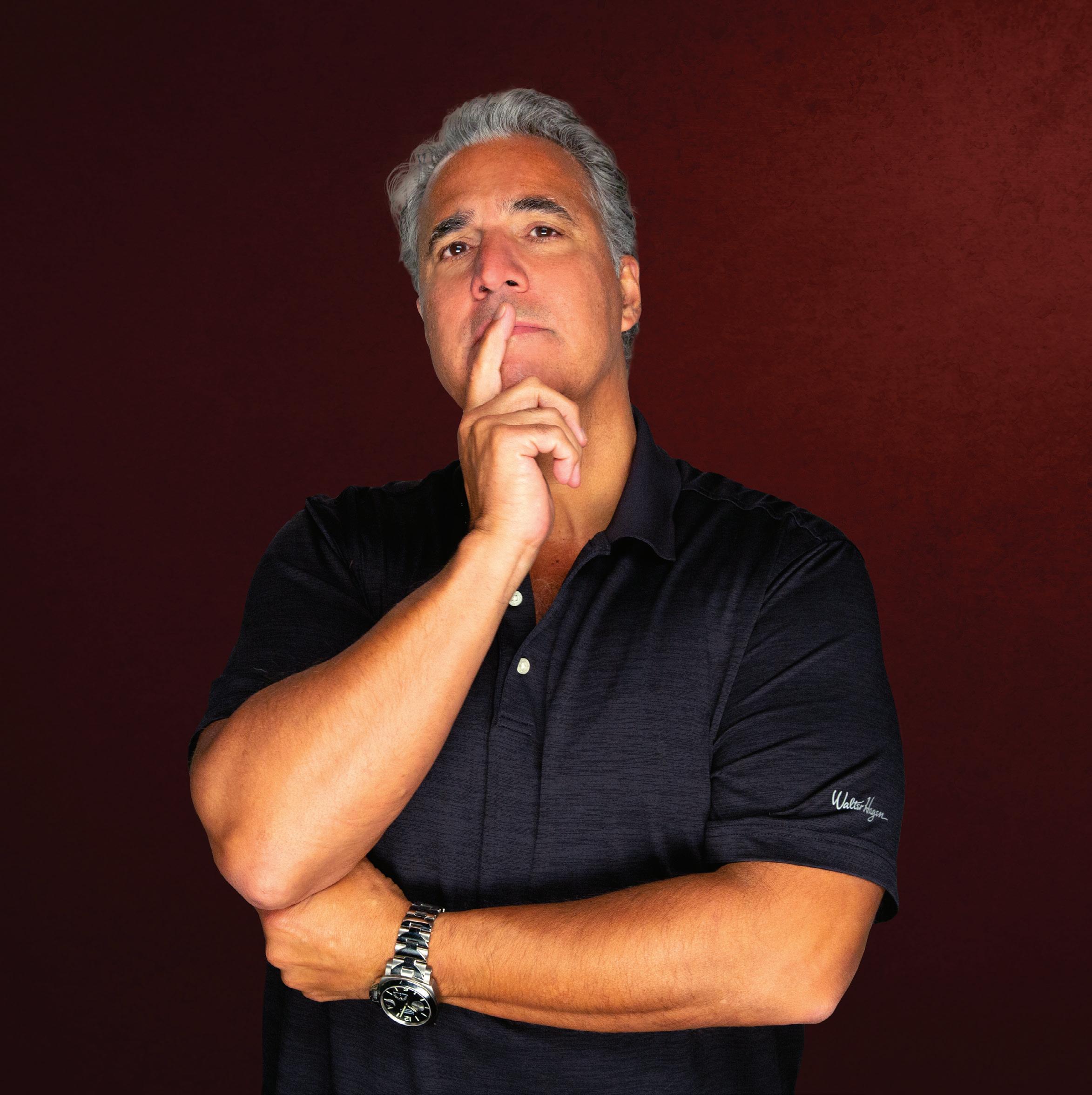

Battista has quite the backstory. It was
1980 when he dug up his roots in Brooklyn, New York, and pointed his pristine Dodge Diplomat toward Chicago with a mere $300 in his pocket. Yet he went on to co-own one of Chicago’s hottest nightclubs. By the time the market crashed in 1987, he had enough cash on hand to buy a seat at the CBOE, and the rest is history.
Learn more about Battista and active trading strategies in the next issue of Luckbox
GARRETT ROODBERGEN69TH ANNUAL MAGGIE AWARDS

BEST SPECIAL THEME ISSUE (DECISION 2020) AMERICAN SOCIETY OF MAGAZINE EDITORS > BEST NEWS & POLITICS COVER 2020—

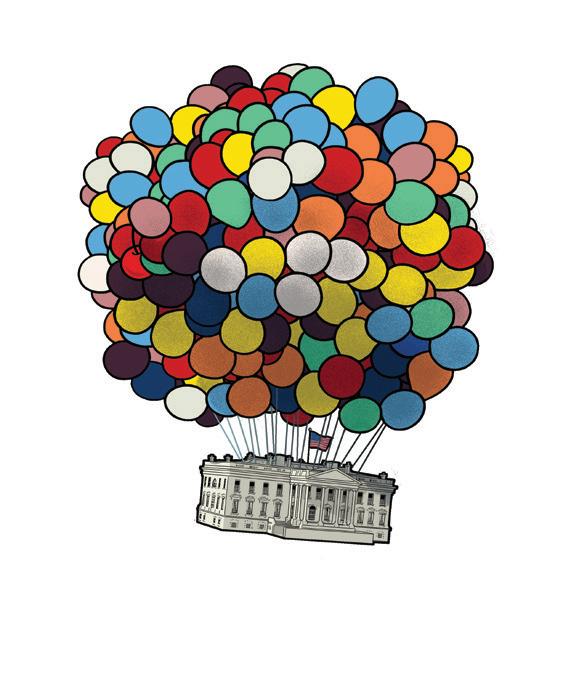

READERS’ CHOICE (DECISION 2020) > BEST BUSINESS & TECHNOLOGY COVER 2021—


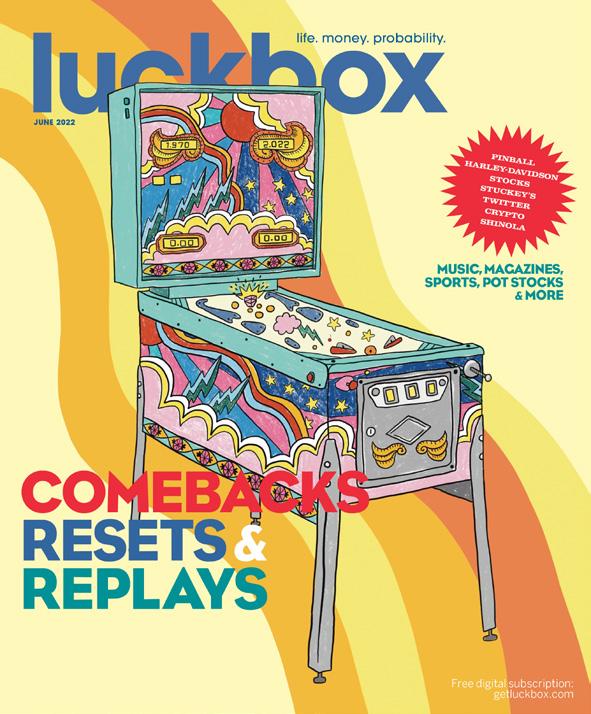



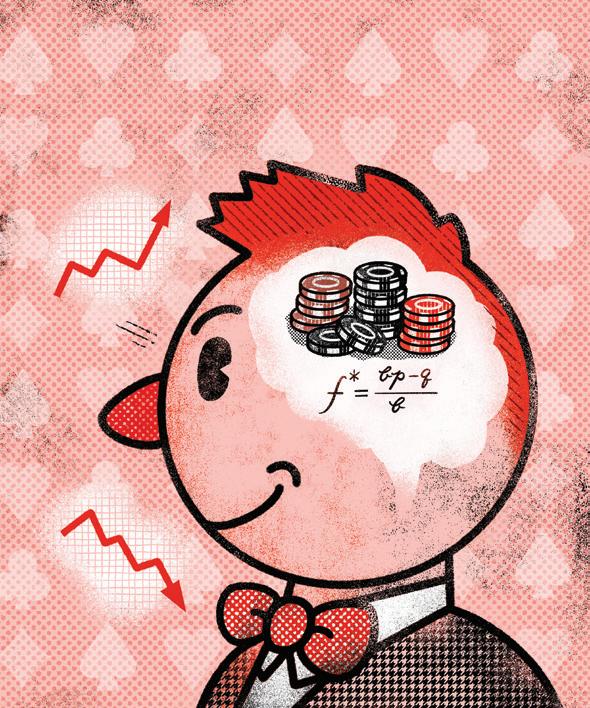


READERS’ CHOICE (AMAZON’S PREDATORY CAPITALISM)
& 69TH ANNUAL)
(DECISION 2020)
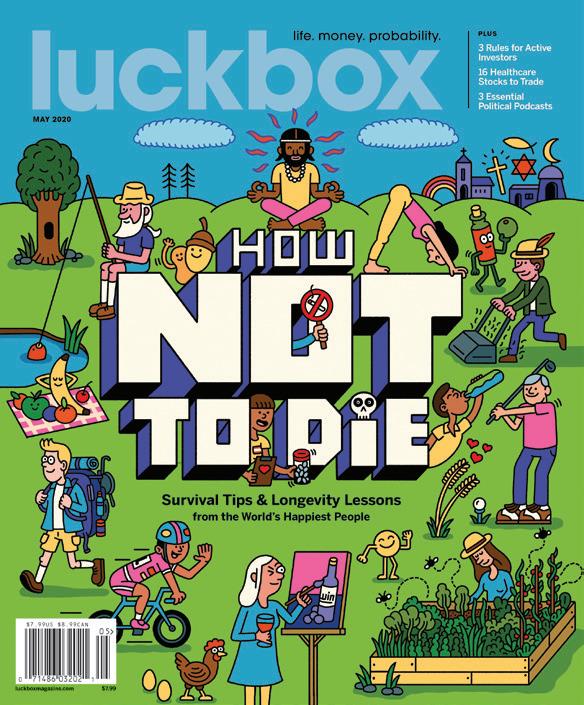
PODCASTING)

(DECISION
FOLIO EDDIE (EDITORIAL) AWARDS > BEST FULL ISSUE, CONSUMER (ART ISSUE) 2022 > BEST FULL ISSUE, CUSTOM CONTENT (THINKING IN BETS) 2022 > BEST HOW-TO, SINGLE ISSUE (THINKING IN BETS) 2022 > SERIES OF ARTICLES—HM 2021 > FULL ISSUE (AMAZON)—HM 2021 > BEST HOW, SINGLE ISSUE (ART & SCIENCE OF FORECASTING)
